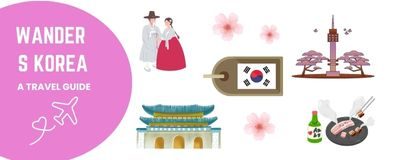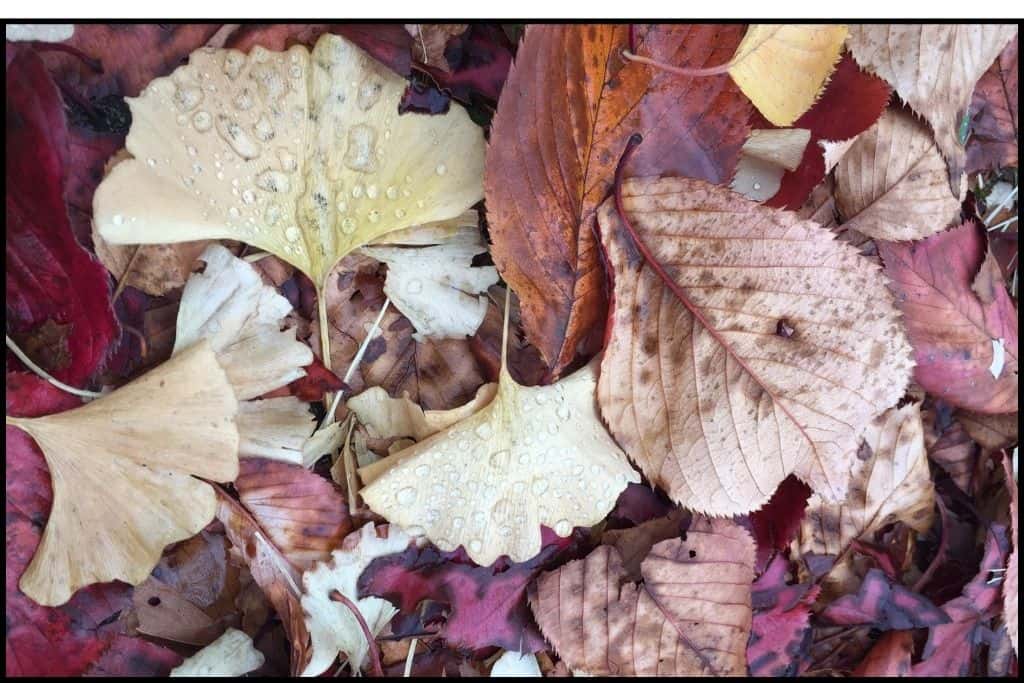
When autumn arrives in Seoul, the city transforms into a breathtaking canvas of gold, crimson, and amber.
From royal palaces draped in maple leaves to modern parks carpeted in fallen ginkgo, Seoul offers some of Korea’s most stunning and accessible fall foliage.
Unlike crowded destinations that require long journeys from the capital, Seoul’s best fall colors are often just a subway ride away.
In this guide, we’ll explore Seoul’s top fall foliage destinations, from subway-accessible palace gardens and city parks to nearby mountain trails and day trip destinations that showcase Korea’s most spectacular autumn colors.
TL;DR: Seoul Autumn Foliage Cheat Sheet
- Best time: Last two weeks of October for peak colors & crisp weather.
- Don’t miss: Changdeokgung Secret Garden (best palace), Seoul Forest or Olympic Park (most convenient), and easy day trips like Nami Island or Hwadam Forest.
- Hidden gems: Try university campuses and local walks in Samcheong-dong for quiet autumn vibes.
- How to get around: Subway + T-money card = cheap & easy.
- Extra tip: Combine autumn colors with a hanbok rental or seasonal foods for a classic Korean fall experience.
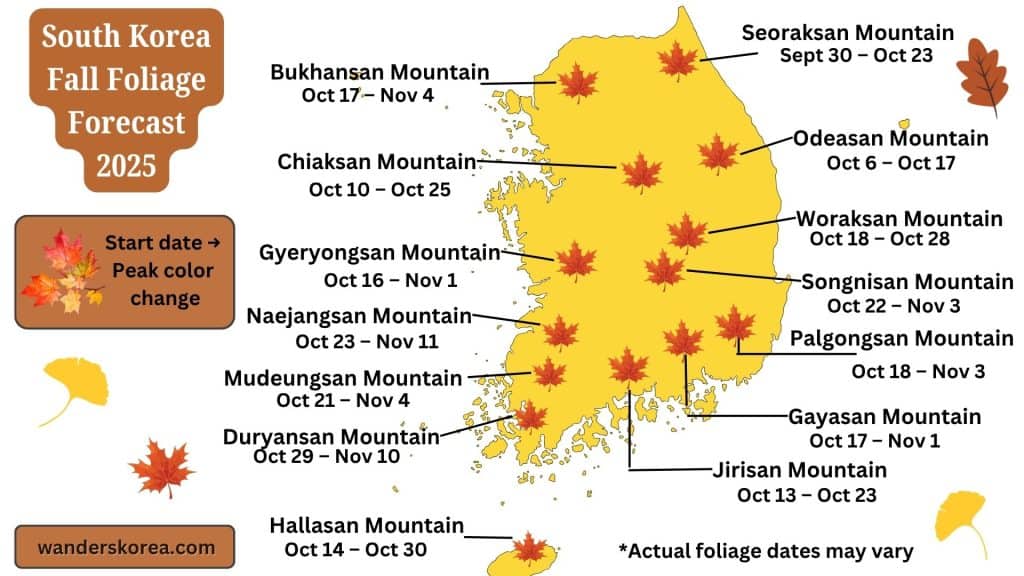
Why Visit Seoul in Autumn
Seoul’s autumn appeal goes beyond just the fall colors. The season brings:
- Comfortable weather: Mild temperatures (15-20°C/59-68°F), perfect for walking and sightseeing
- Clear skies: Less humidity and more sunny days than summer
- Weather note: While autumn generally brings clear skies and lower humidity, Seoul can occasionally experience fine yellow dust (미세먼지) during this season. It’s worth checking air quality forecasts and bringing a mask for days when dust levels are high.
- Cultural experiences: Traditional autumn festivals and seasonal food specialties
- Excellent accessibility: Most autumn spots are reachable by subway or short bus rides
- Photography opportunities: Stunning contrasts between historic architecture and natural beauty
**Air Quality Note: While autumn generally brings clear skies, Seoul can occasionally experience fine yellow dust (미세먼지). Check air quality forecasts and consider bringing a K94 mask for high dust days. I use the MiseMise (미세미세) app for reliable air quality updates and always carry a KF94 mask on bad air days.
Whether you have just a few days or a whole week in Seoul, this guide will help you make the most of the city’s autumn splendor.
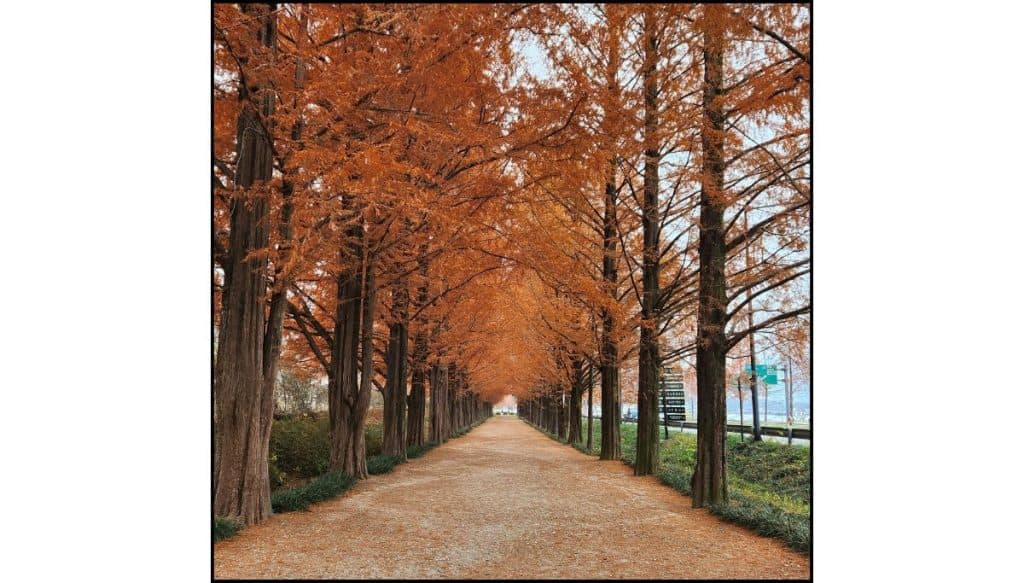
Essential Seoul Autumn Travel Planning & Tips
How Long to Stay in Seoul for Fall Foliage
For a comprehensive Seoul autumn experience, plan for at least 3–4 days.
This gives you time to see the major palaces, explore several parks, and take a day trip beyond the city.
If you’re staying strictly within Seoul, 2 days can cover the highlights — but expect to feel a bit rushed.
Photography enthusiasts should consider 5–7 days to capture multiple locations in the best light and adjust for weather.
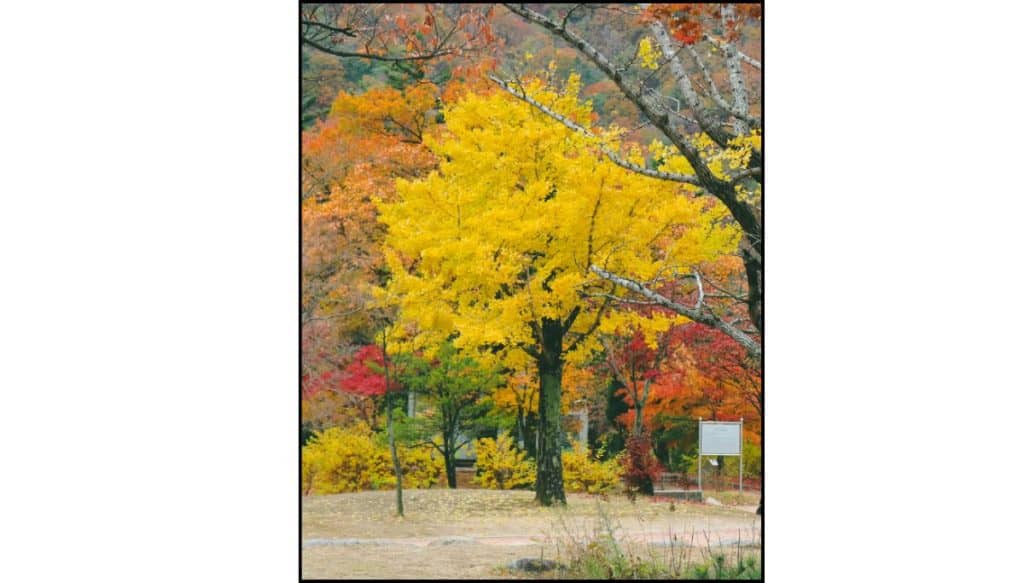
Best Areas to Stay in Seoul
The best area for your Seoul autumn trip depends on which foliage spots you prioritize.
Central areas like Myeongdong offer easy palace access, while Hongdae works well for Han River parks and western Seoul locations.
👉 For detailed neighborhood breakdowns, hotel recommendations, and booking tips, check out my complete Seoul accommodation guide.
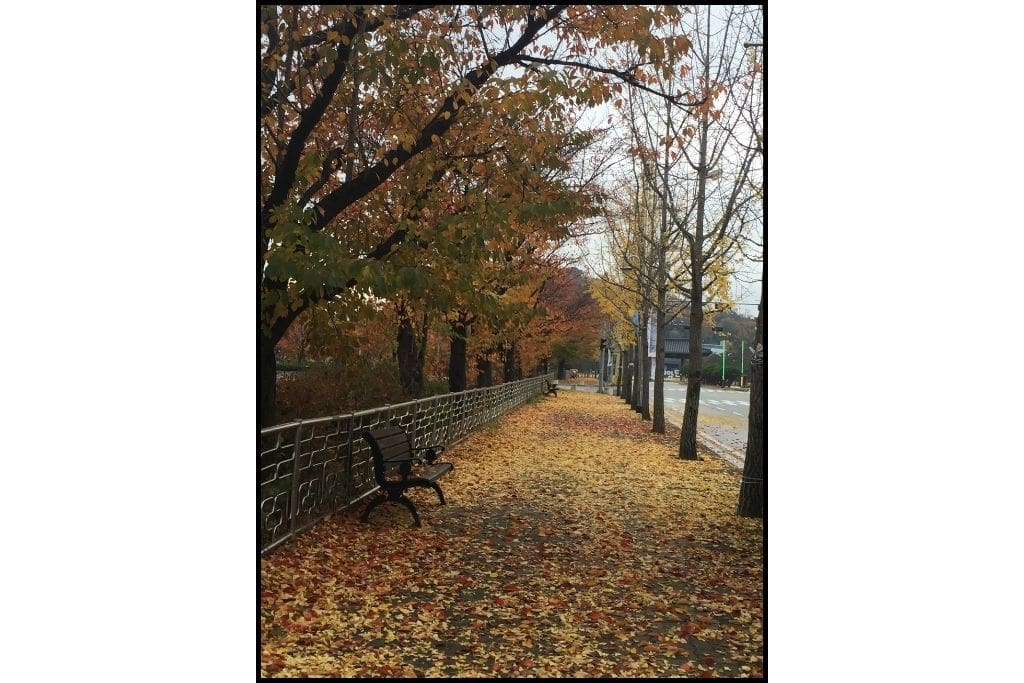
Quick tip: Book early for October — autumn is peak season, and good hotels fill up fast!
Holidays — Important Dates to Know
Keep in mind that Chuseok (Korean Thanksgiving) usually falls in late September or early October as a three-day holiday, and Hangeul Day is October 9th.
During Chuseok especially, many businesses close and transportation gets busy as families travel.
Check dates when planning your trip — you might want to avoid Chuseok for easier logistics, or embrace it for a cultural experience.

Transportation Essentials for Your Autumn Adventure
T-money Card:
Grab a T-money card as soon as you arrive. It’s a must for easy subway and bus rides between foliage spots.
Load about ₩20,000–30,000 for a few days of stress-free sightseeing.
Subway Lines to Know:
- Line 3: Handy for palace-hopping — Anguk and Gyeongbokgung stations put you right at the gates.
- Line 2: Loops you around Seoul Forest, Olympic Park, and other east/south autumn gems.
- Line 4: Runs through Myeongdong and heads up to Namsan Park — perfect for city views with fall colors.
Walking Expectations
Many fall spots need a bit of walking, expect 15–30 minutes on foot from the nearest station.
Bring comfy shoes and layer up. Seoul’s autumn mornings and evenings can be crisp!
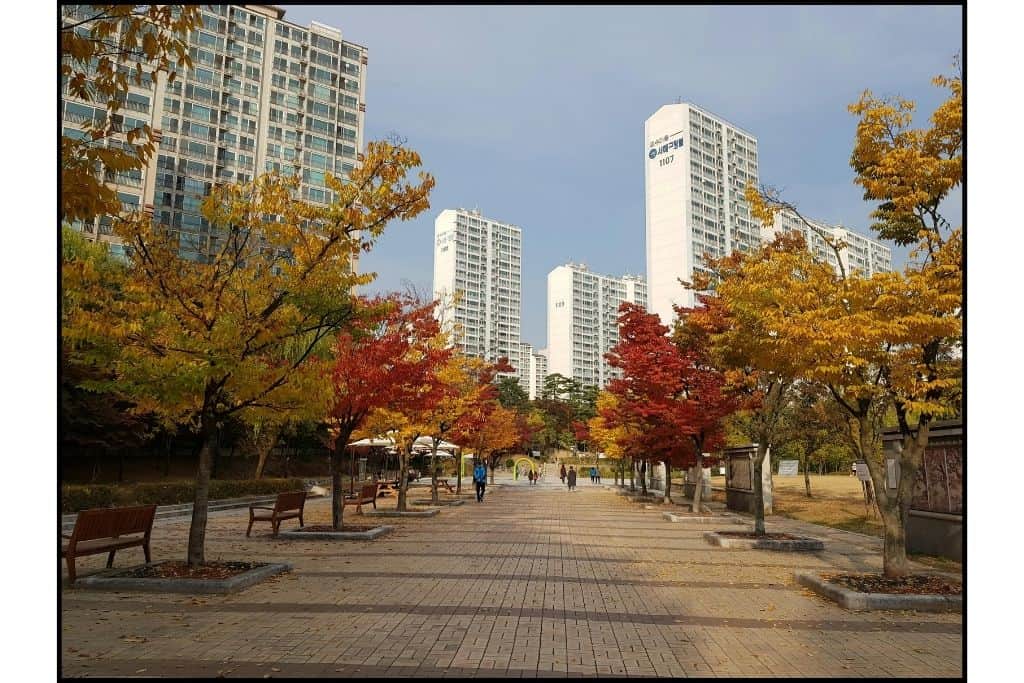
When to Snap the Best Fall Photos in Seoul
- Golden Hour: About 30 minutes before sunset (usually 5:30–6 PM in October).
- Morning Light: Soft light + fewer crowds — ideal for Changdeokgung and palace gardens.
- Overcast Days: Don’t skip them — colors pop more without harsh shadows.
What You’ll Need for a Day of Leaf Peeping
Layered Clothing:
October mornings can be chilly (around 10°C/50°F) and afternoons warm up to 20°C/68°F , so I recommend to pack layers.
A hoodie, a light jacket or windbreaker (bonus if it has a hood), comfy walking shoes, and a scarf will keep you cozy when the wind picks up.
Photography Gear:
If you’re keen to level up your foliage photos, bring a polarizing filter to cut glare and boost those fiery autumn colors.
Practical Extras:
Don’t forget a portable charger (you’ll take lots of pics), a small umbrella for surprise drizzles, a small bag for any trash, and a comfy daypack for long walks and snacks.

Autumn Crowds: What to Know
Weekday vs. Weekend:
Weekdays are your best friend! You’ll find way fewer people at busy spots like the Secret Garden at Changdeokgung or Namsan Park. But it might still be busy.
Peak Foliage Period:
During the 2–3 peak weeks in October, you’ll see the biggest crowds.
Arriving early might help, but popular spots will still be lively. Expect to spend more time than you think, pack your patience, and enjoy the atmosphere
Alternative Timing:
If mornings aren’t your thing, try a late afternoon visit.
Late afternoon visits (around 4-5 PM) can feel slightly less hectic than morning tour group rushes.
But let’s be honest. During peak season, popular spots stay busy.
The upside? You might catch golden hour light that makes the crowds worth it.
Traditional Experiences for Your Seoul Adventure
Hanbok Rentals:
Add a traditional touch to your palace day by renting a hanbok.
These beautiful outfits make your photos pop, especially in autumn.
There are a lot of rental shops near Gyeongbokgung and Changdeokgung that have so many gorgeous colors and designs and even offer simple hairstyling.
Guys can join the fun too. You’ll see couples and families all dressed up for photos and palace strolls.
Quick reality check: Wearing a hanbok gets you free palace entry. However, the rental usually costs ₩15,000 and up depending on the style. Palace tickets are about ₩3,000. So think of it as an experience, not a money-saver! Koreans love seeing visitors wear hanbok respectfully. It’s fun, photogenic, and part of the living palace atmosphere.
I loved the full hanbok experience, hair styling and all! I definitely recommend it if it fits your budget. Don’t stress about whether it’s appropriate: Koreans want respectful visitors to embrace this tradition.
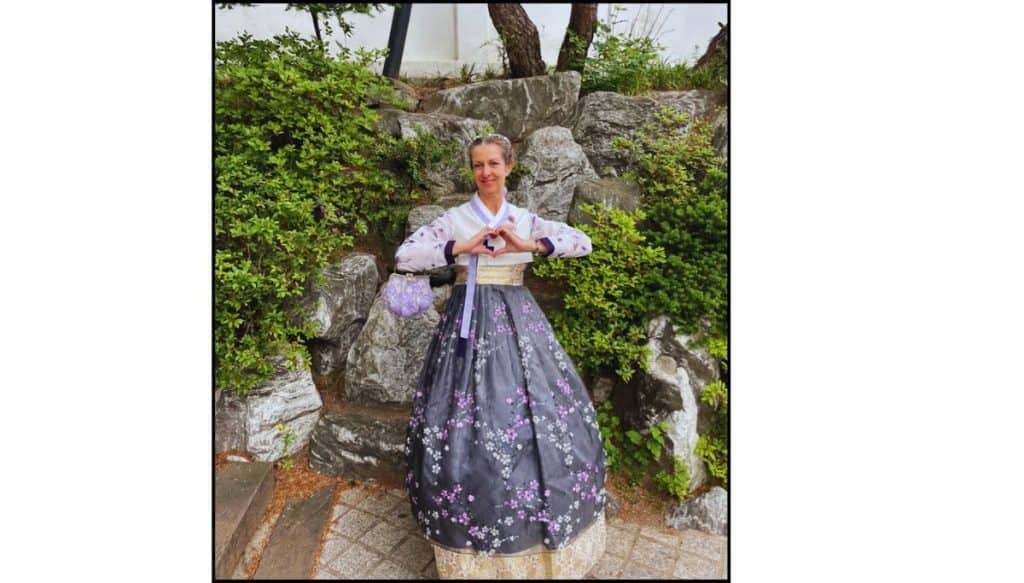
Autumn Flavors to Try
October is prime persimmon season in Korea. They are sweet, juicy, and easy to find at markets and street stalls.
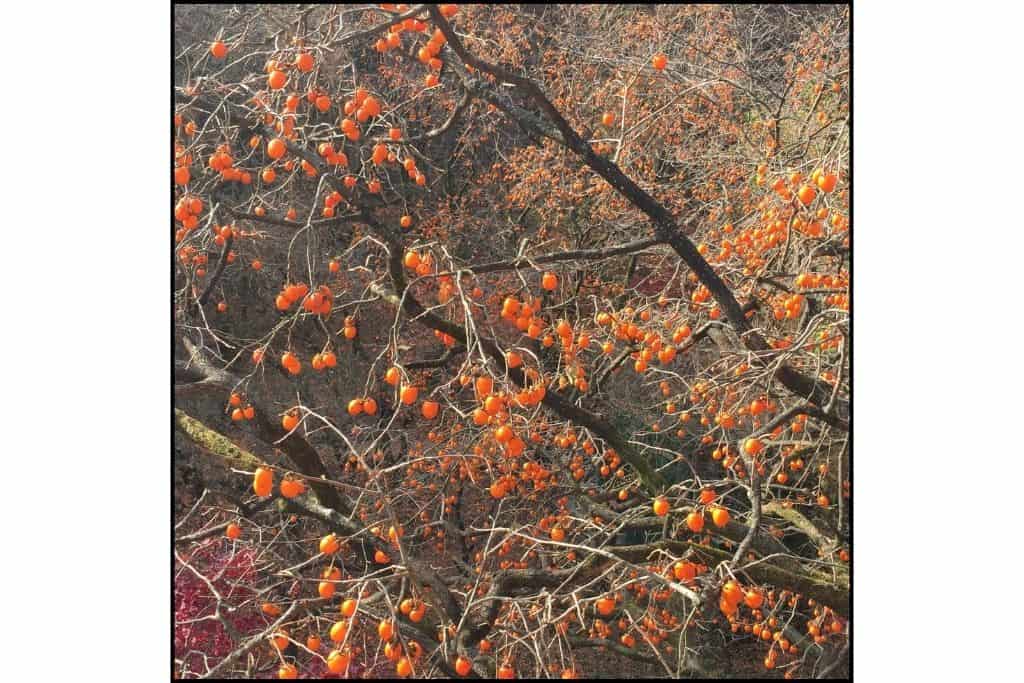
You’ll also spot roasted chestnuts being sold from little carts and cozy dishes like jeonbok-juk (abalone porridge) on seasonal menus.
If you see giant apple pears (called “bae” in Korean), grab one — they’re crisp, sweet, and taste just like Korean autumn in a single bite.
Best Historical Autumn Spots in Seoul
Historic Palaces: Where History Meets Fall Beauty
Seoul’s royal palaces offer some of the city’s most stunning autumn experiences, centuries-old architecture with bursts of maple, ginkgo, and persimmon trees that make you feel like you’ve stepped into a historical painting.
I love how the quiet palace courtyards feel extra magical when the leaves start to fall — it’s one of the easiest ways to soak up both history and peak foliage in one visit.
Changdeokgung Palace & Secret Garden (Top Pick)
Changdeokgung Palace, a UNESCO World Heritage Site, is widely considered the best palace for autumn foliage viewing in Seoul.
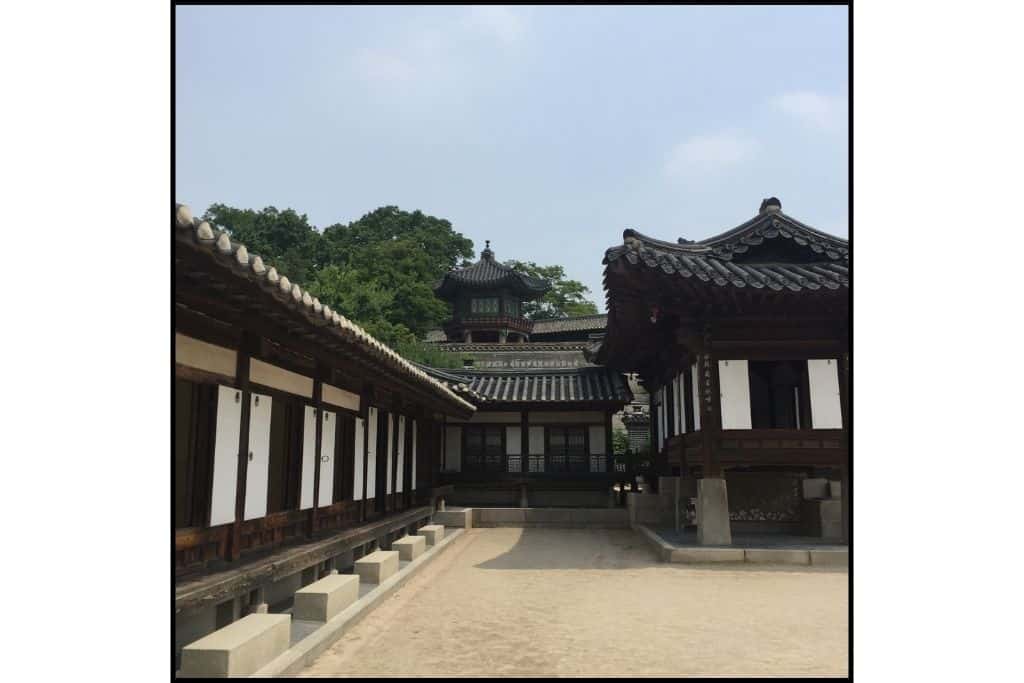
While the main palace grounds are beautiful, the real magic happens in Huwon (the Secret Garden), where more than ten different tree species create a spectacular autumn display.
Why it’s special:
The Secret Garden was designed to harmonize with the surrounding nature, so the foliage feels fully integrated into the landscape rather than just decorative.
Ancient pavilions reflect in mirror-like ponds surrounded by maple and ginkgo trees that have stood here for centuries.
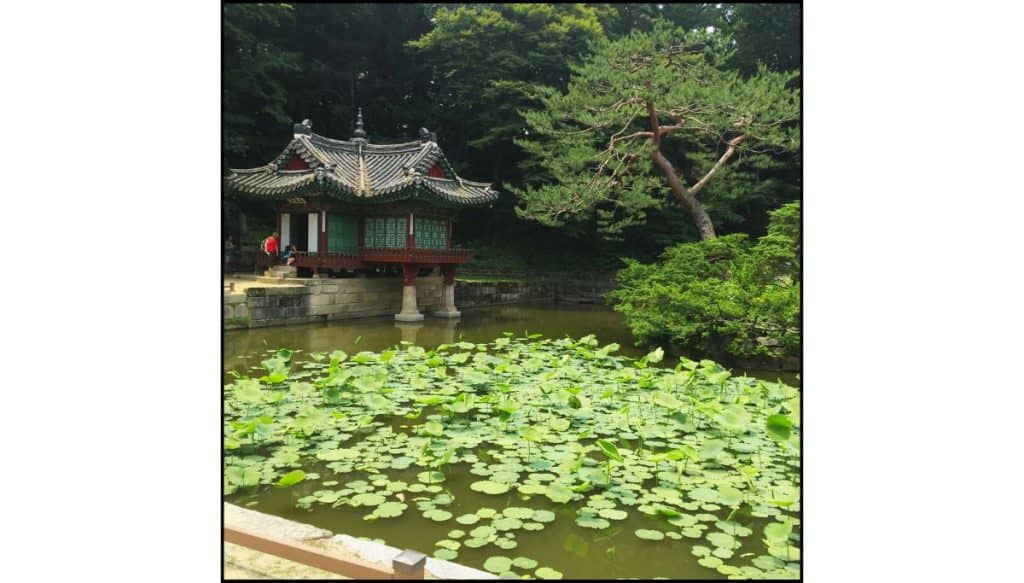
I’ve taken the Secret Garden tour before, though not in peak autumn. It’s beautiful any time of year, so I can only imagine how stunning it is when the leaves turn.
Best autumn spots within the garden:
- The central pond area with Buyongjeong Pavilion
- The winding pathways through the maple grove
- Aeryeonjeong Pavilion overlooking the water
Practical information:
- Location: 99, Yulgok-ro, Jongno-gu, Seoul
- Getting there: Subway Line 3 to Anguk Station, Exit 3, 5-minute walk
- Hours: Palace: 9:00–18:00 (Secret Garden tours have seasonal variations)
- Important: The Secret Garden requires a separate ticket and a guided tour (available in English).
- Tours: The garden tour is about 90 minutes — advance booking is recommended during peak autumn.
- Free entry tip: Wearing a hanbok gives you free palace entry (but you’ll still need a Secret Garden ticket).
- Visitor tips: The tour involves a fair bit of walking on uneven paths with some steep sections. Wear comfortable shoes and allow 2–3 hours total to see both the palace and garden.
Check the official Changdeokgung Palace website for up-to-date hours, Secret Garden tour times, and admission details.
Gyeongbokgung Palace: Royal Gardens in Autumn
As Seoul’s largest and most famous palace, Gyeongbokgung offers expansive grounds where autumn foliage frames iconic Korean architecture.
It’s a popular spot for both locals and tourists, so it can get busy, especially on weekends and sunny fall days.
Some of the best photo spots, like Gyeonghoeru Pavilion or Hyangwonjeong Pavilion, may have a bit of a line, so plan to wait if you want that perfect shot.
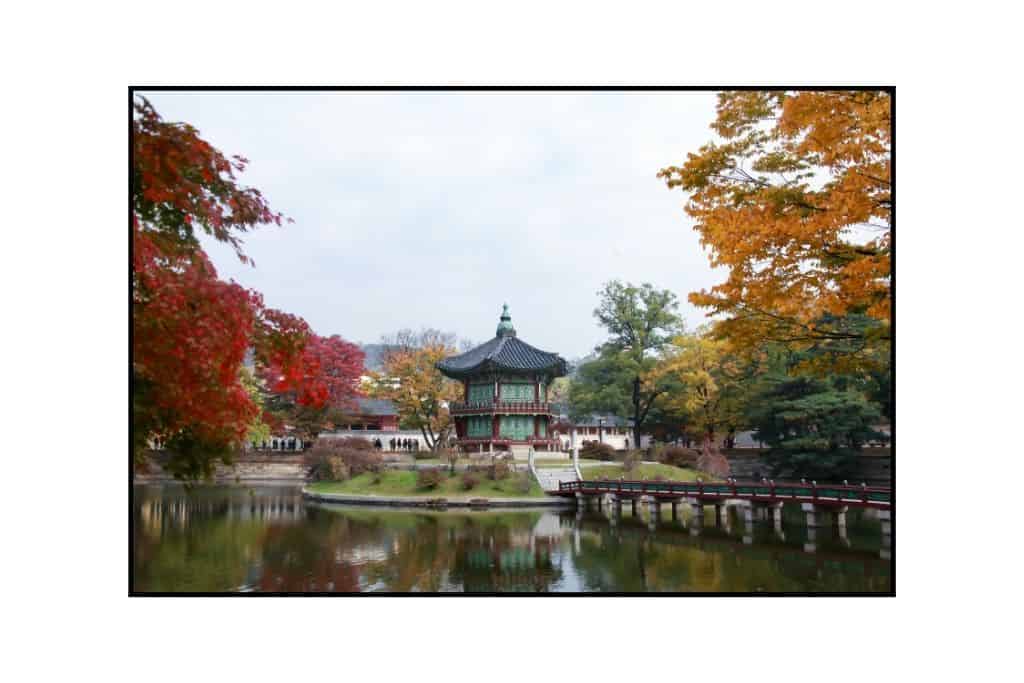
Practical information:
- Getting there: Subway Line 3 to Gyeongbokgung Station (Exit 5) gives you direct access to the main gate, or Line 5 to Gwanghwamun Station (Exit 2), about a 7-minute walk.
- Hours: Closed Tuesdays — check the official site for current hours and entry fees.
- Special experience: Don’t miss the Changing of the Guard ceremony at Gwanghwamun Gate (10:00 AM & 2:00 PM daily, except Tuesdays).
- Free English tours: Gyeongbokgung offers free English guided tours at set times each day. I took one once and ended up being the only person — definitely worth it if you want extra history and hidden details!
- Museums: The National Palace Museum and National Folk Museum are inside the grounds.
- Planning tip: Gyeongbokgung is huge — allow at least 2–3 hours to enjoy the autumn highlights without rushing.
You can check the official Gyeongbokgung Palace website for opening hours, ticket & free guided tour info, and any seasonal events.
Deoksugung Doldam-gil (Stone Wall Path): Romantic Fall Walk
Deoksugung offers a unique autumn experience as Seoul’s only palace with Western-style architecture mixed with traditional Korean buildings.
The fall foliage really makes the contrast stand out, with ginkgo and maple trees adding pops of gold and red around the stone walls.

Practical information:
- Getting there: Subway Line 1 or 2 to City Hall Station, Exit 1 (1-minute walk)
- Hours: 9:00 AM – 9:00 PM (last admission 8:00 PM)
- Closed: Mondays (or next business day if Monday is a holiday)
- Stone Wall Path: Open 24/7, free access
- Local legend: There’s an old superstition that couples who walk the entire Stone Wall Path together might break up. Despite the myth, it’s still one of the city’s favorite date spots!
- Nearby attractions: Seoul Museum of Art, Jeongdong Theater, plus lots of cafés and restaurants within a short walk.
Bonus Historic Autumn Spots
Changgyeonggung Palace: Serene Autumn Strolls
Connected to Changdeokgung, this smaller palace offers beautiful autumn courtyard views with fewer crowds.
The greenhouse and pond areas are especially photogenic when the leaves start turning.
📍 Directions: Subway Line 3, Anguk Station, Exit 3 — about a 19-minute walk. Or Line 4, Hyehwa Station, Exit 3 or 4 — about a 15-minute walk.
🔗 Official site
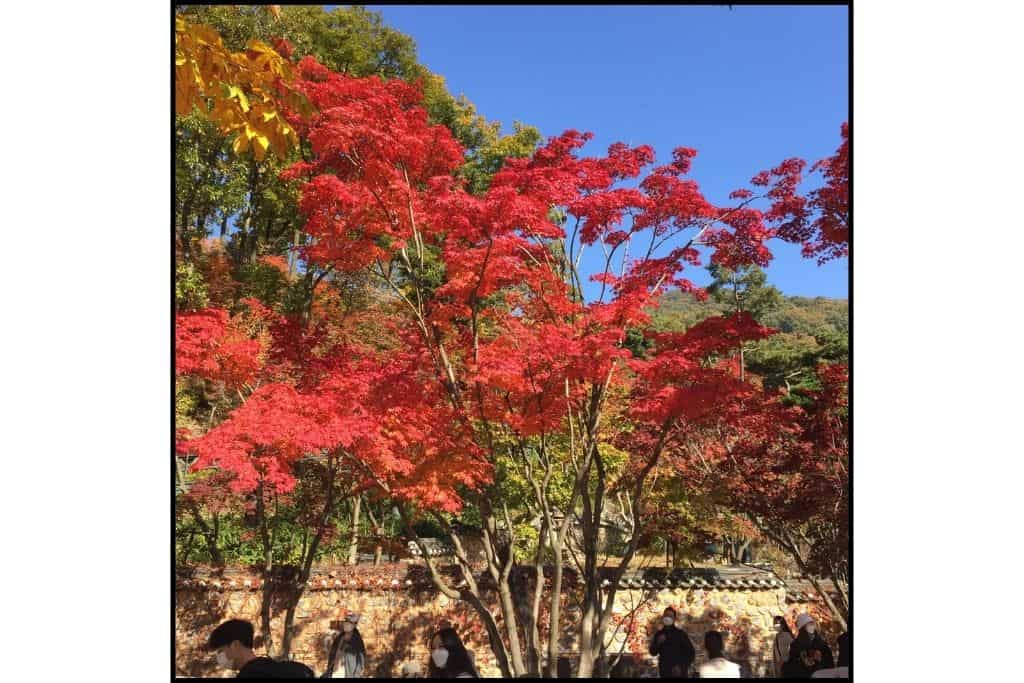
Jongmyo Shrine: Tranquil Autumn Sanctuary
Technically a Confucian shrine rather than a palace, Jongmyo is famous for its ancient tree-lined pathways that create a quiet, peaceful atmosphere in autumn . A perfect for a slow stroll.
📍 Directions: Subway Line 1, 3, or 5 — Jongno 3-ga Station, use Exits 8 through 11 (5-minute walk).
Closed Tuesdays.
🔗 Official site
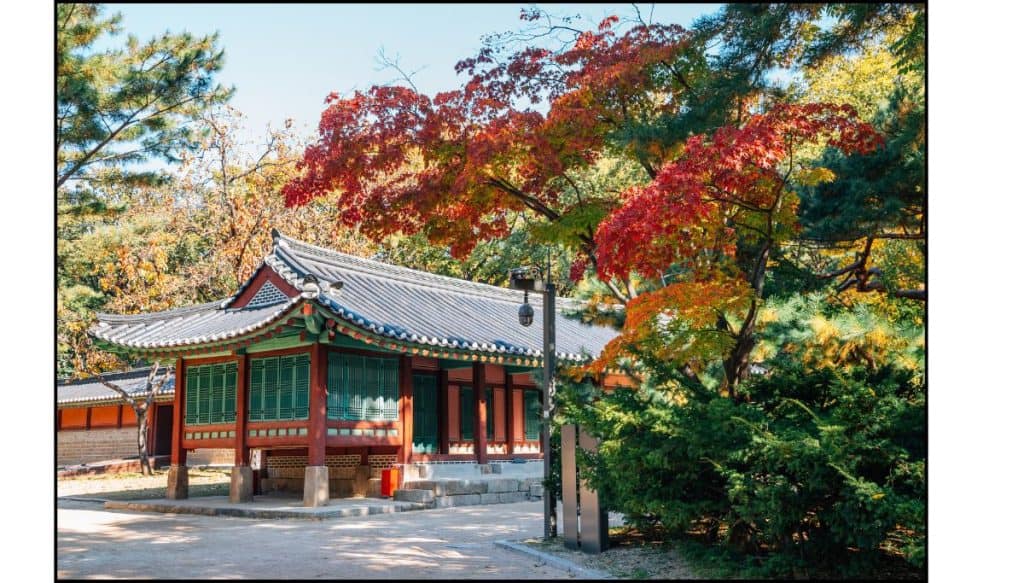
Parks & Natural Areas: Seoul’s Green Autumn Escapes
Seoul’s parks transform dramatically in autumn, from cozy urban forests to wide riverside walks lined with golden ginkgo and maple trees.
These green escapes are the easiest way to soak up fall colors without leaving the city.
Most are an easy subway ride away and perfect for a lazy afternoon stroll or a quick photo break between other sights.
Seoul Forest Park: Urban Fall Colors
Once a royal hunting ground during the Joseon Dynasty, Seoul Forest has evolved into one of the city’s best urban parks for catching autumn colors without leaving the city center.
Its themed zones offer everything from deer watching among golden leaves to peaceful wetland boardwalks just steps from busy streets.
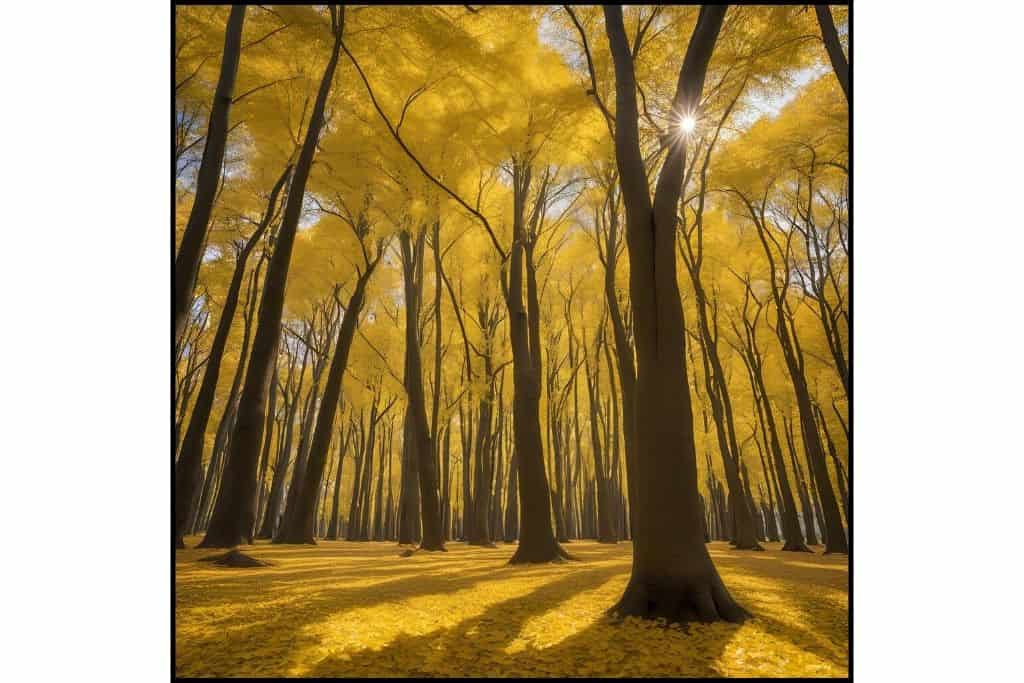
Autumn highlights:
- Ginkgo Tree Boulevard: A stunning corridor of golden ginkgo trees that creates a natural tunnel effect
- Eco Forest: Watch deer roam freely among autumn-colored trees
- Wetlands Wooden Paths: Tranquil boardwalks offering reflective autumn photography opportunities
- Culture & Art Park: Outdoor art installations framed by seasonal colors
Practical information:
- Getting there: Suin-Bundang Line to Seoul Forest Station, Exit 4 (4-minute walk/265 meters)
- Hours: Open 24 hours (some themed areas have limited hours – check official website)
- Best for: Photography, family outings, peaceful walking
Visit tip: The park is quite large – plan for 2-3 hours to explore the main autumn areas without rushing.
Olympic Park: Iconic Autumn Fields
Built for the 1988 Summer Olympics, this massive park offers diverse autumn scenes across its 1.4 million square meters.
Olympic Park is especially famous for its seasonal flower displays that complement the classic fall foliage.
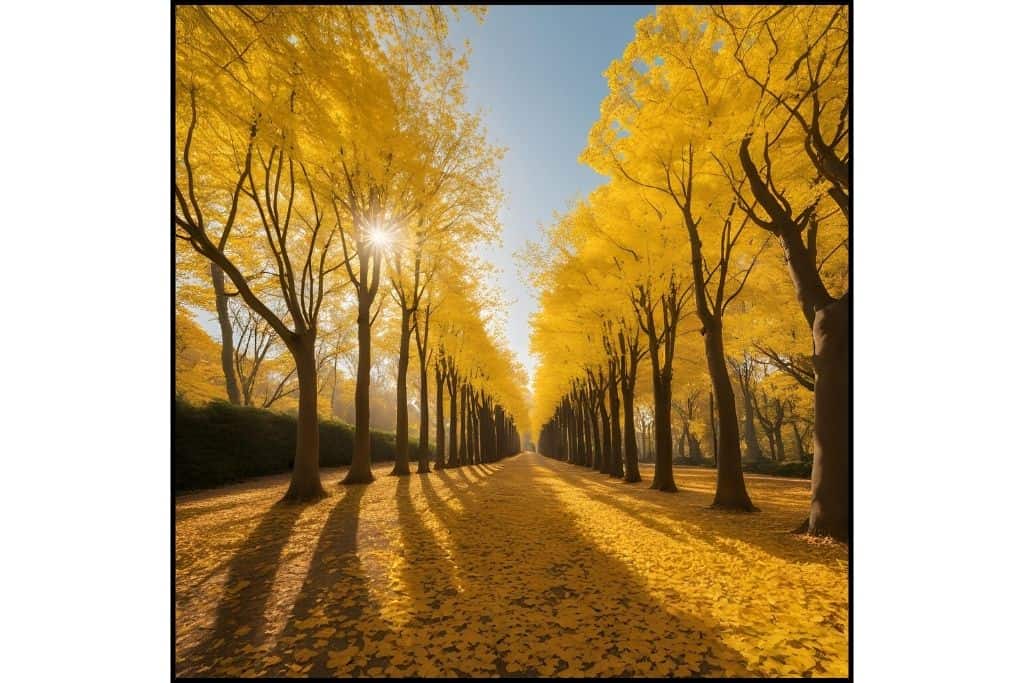
Autumn must-sees:
- Ginkgo Tree Path: 1.4 km of golden ginkgo trees lining the perimeter from Mongchontoseong Station to Olympic Park South Gate 1.
- Rose Plaza: Thousands of roses bloom here, creating a colorful contrast with autumn trees.
- Cosmos Fields: Big fields of orange cosmos flowers bloom from late summer into autumn — a local favorite for photos.
- Pink Muhly Grass Fields: Feathery pink grass that’s become an Instagram favorite in Korea.
Practical information:
- Getting there:
- Line 5 to Olympic Park Station, Exit 3 or 4
- Line 9 to Hanseong Baekje Station, Exit 2 (1-minute walk)
- Line 5 to Olympic Park Station, Exit 3 or 4
- Hours: 24 hours
- Cost: Free
- Address: 424, Olympic-ro, Songpa-gu, Seoul
Photography tip: The cosmos fields are extra photogenic in late afternoon light. The orange blooms really pop against the open lawns and city backdrop. If you visit on a weekend, expect to see lots of locals doing casual photo shoots.
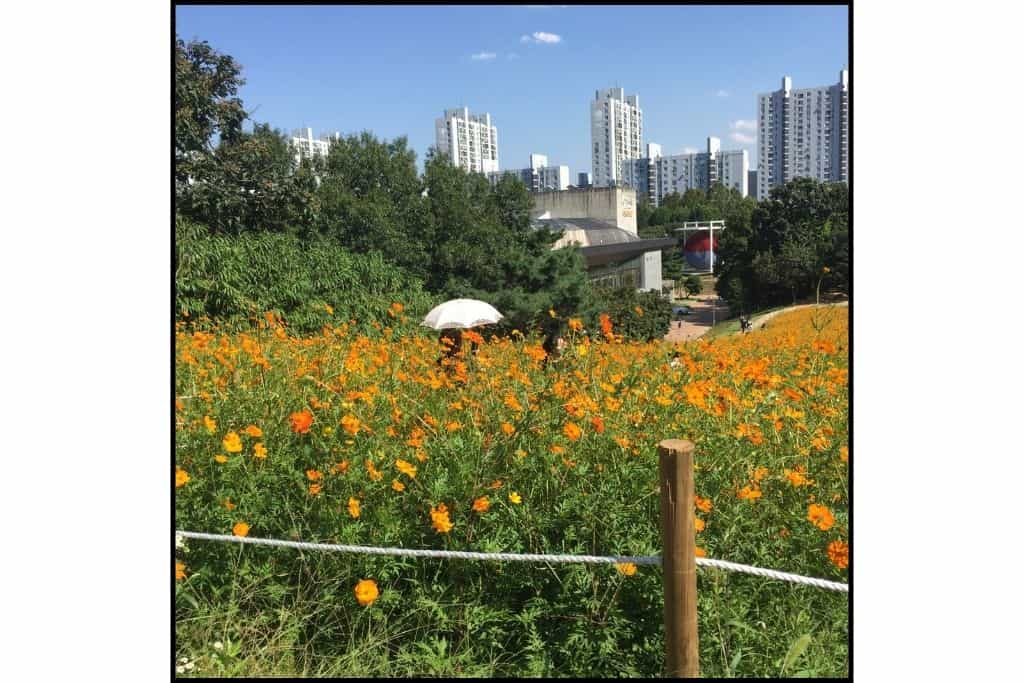
Namsan Park & N Seoul Tower: Scenic Fall Views
Namsan offers Seoul’s most iconic autumn experience, combining the city’s famous tower with stunning fall foliage and panoramic city views.
The mountain setting gives you a more dramatic autumn landscape than the city’s flatter parks.
Plus it’s beautiful near sunset when you can watch the city lights come alive alongside the glowing tower

What to Do at Namsan:
- Cable car ride: Aerial views of autumn foliage covering the mountainside.
- Hiking trails: Multiple walking paths through fall-colored forests.
- Tower observation deck: 360-degree views of Seoul’s autumn landscape.
- Love locks area: Romantic autumn photo spots with the city skyline as your backdrop.
Practical information:
- Getting there: Subway Line 4 to Myeongdong Station, Exit 3, then take the Namsan Cable Car or walk up from Hoehyeon Station, Line 4, Exit 4.
- Alternative: Namsan Circular Shuttle buses (Routes 02, 03, or 05).
- Tower hours: Vary by season and facility — check the official site for up-to-date info.
If you’re already doing a lot of walking in Seoul, I actually recommend taking the bus or cable car up and walking down if you want the forest experience.
The climb can feel long at the end of a busy day. Ending your day here is a great call too.
As the sun sets, you’ll see the tower light up and the whole city glow beneath you. It’s one of my favorite ways to wrap up a day exploring Seoul.
Songpa Naru Park (Seokchon Lake): A Scenic Autumn Escape in Jamsil
Songpa Naru Park, better known as Seokchon Lake, sits in Seoul’s Songpa district near Jamsil.
This peaceful spot comes alive in autumn, when the lakeside trees turn brilliant red, orange, and yellow.
The lake is divided into East and West sections by Songpa-daero and is ringed by easy walking paths.
It’s perfect for a stroll or quick photoshoot with colorful reflections on the calm water.
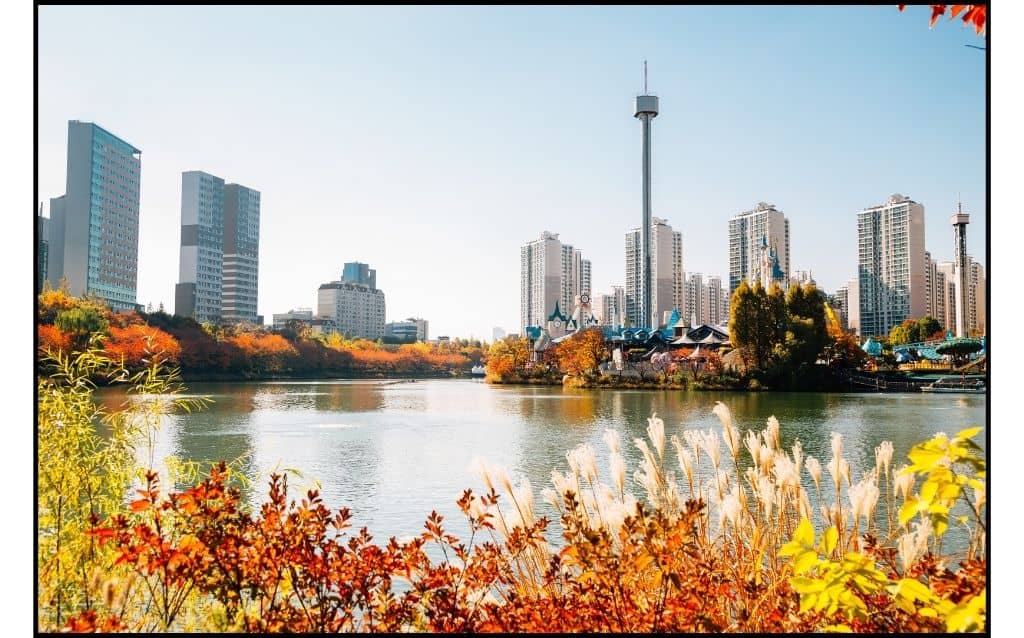
What to Do at Seokchon Lake
- Bangi-dong food alley: Try local bites just a short stroll away.
- Lakeside walk: Easy trails around East and West Lake with stunning fall colors and mirrored reflections.
- Mini photoshoot: Snap colorful foliage shots with the calm lake as your backdrop.
- Lotte World: Pop over to Korea’s tallest tower or Lotte World Adventure theme park next door.
- Café street: Relax at lakeside cafés with autumn views.
Directions: Subway Lines 2 & 8 → Jamsil Station → Exit 2 → about 282 meters on foot (5-minute walk).
Bukhansan National Park: Autumn Mountain Trails
As Seoul’s mountain escape, Bukhansan offers the most dramatic autumn foliage you’ll find inside the city limits.
The park’s granite peaks, ancient Buddhist temples, and forested trails deliver a classic Korean mountain experience, stunning in peak fall.
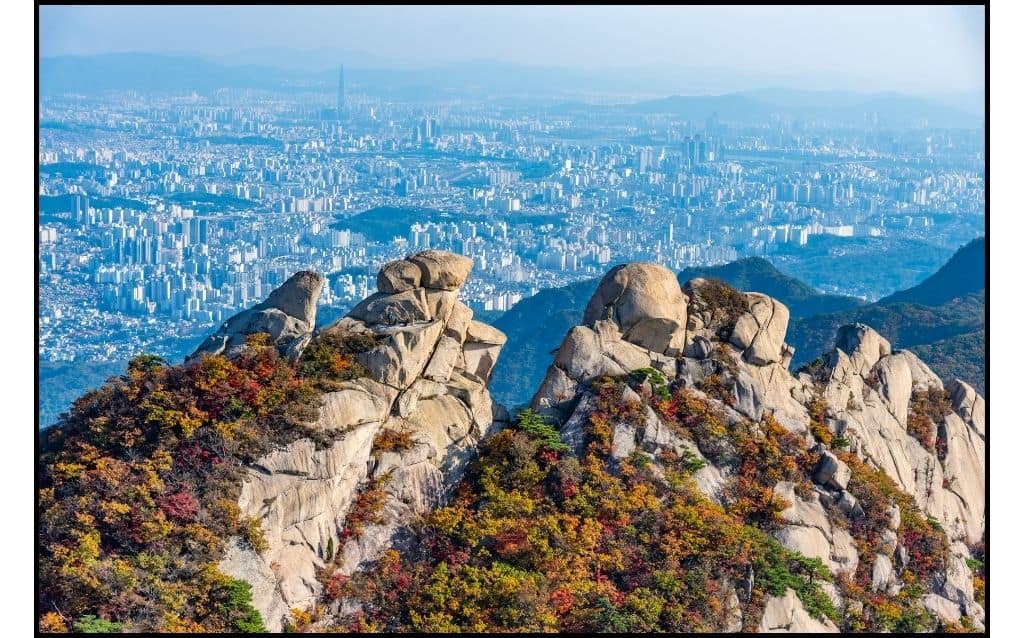
Why visit in autumn:
- Dramatic mountain foliage: Reds, golds, and ambers blanket the slopes.
- Historic temples: Old temple complexes surrounded by colorful forests.
- Hiking variety: Trails for all levels, from gentle valley walks to tough peak climbs.
- City views: Panoramic views of Seoul’s autumn skyline from scenic lookouts.
Popular autumn trails:
- Baegundae Peak: The highest and most challenging trail — unbeatable for panoramic fall views.
- Temple trails: Moderate routes that wind through historic temple sites framed by autumn leaves.
- Lower valley walks: Easier paths if you want fall colors without a steep climb.
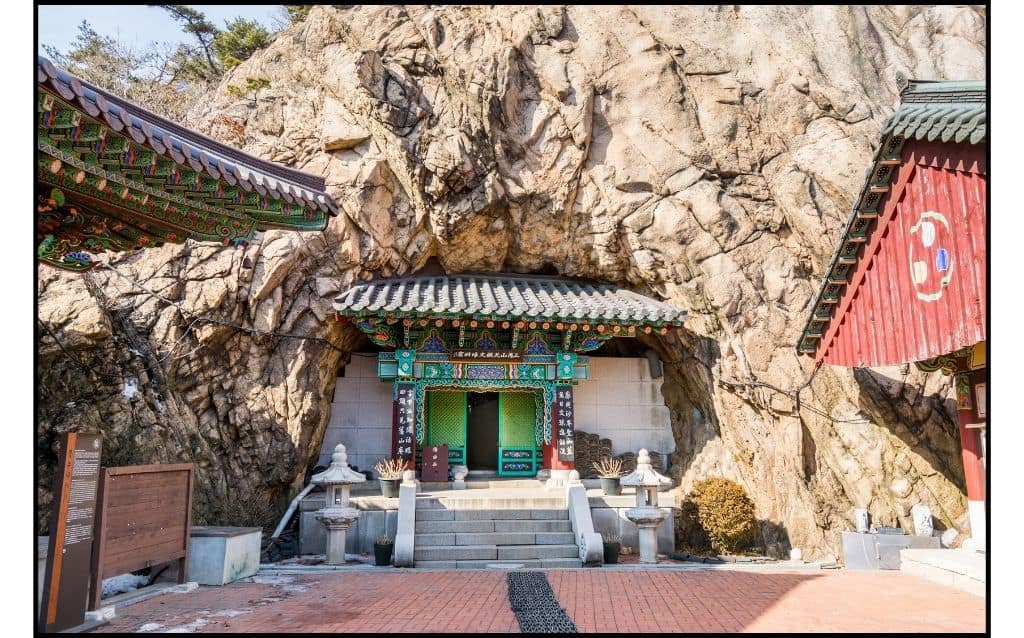
Practical information:
- Getting there:
- Line 3 to Gupabal Station, Exit 1 → Bus 34 or 704 to the park entrance.
- Line 4 to Suyu Station, Exit 1 → Bus 120.
- Line 3 to Gupabal Station, Exit 1 → Bus 34 or 704 to the park entrance.
- Best for: Serious hikers, temple lovers, and mountain photography.
Good to know: This is a true mountain park — trails can be steep and rocky, so wear proper hiking shoes, bring water, and layer up as temperatures drop with elevation.
Cheonggyecheon Stream: Fall Riverside Walks
Cheonggyecheon Stream is an 11-kilometer restored urban waterway flowing through central Seoul, transforming the busy downtown into a calm green corridor.
In autumn (October–November), its tree-lined paths come alive with golden ginkgo and crimson maples. It’s one of the easiest ways to enjoy fall colors without leaving the city center.
I’ve strolled along the stream myself — it’s one of my favorite spots in Seoul for people-watching, reading a book, or grabbing coffee with a friend.
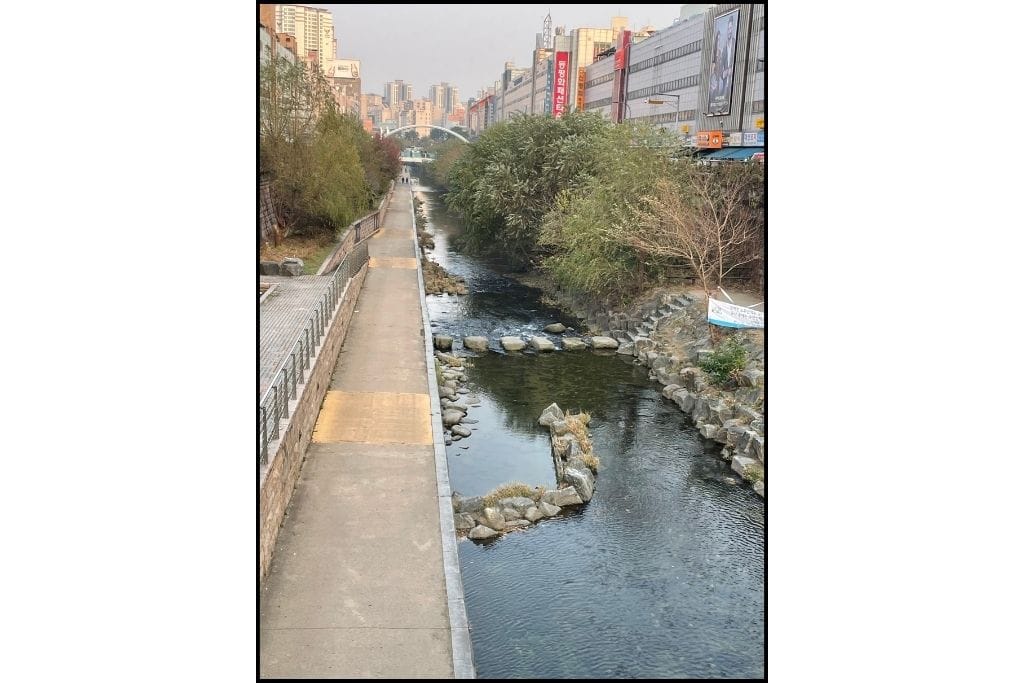
Why you’ll love Cheonggyecheon in autumn:
- Downtown fall foliage: Walk beneath colorful trees with urban views and fresh air.
- Evening atmosphere: Streamside lights add a soft glow to the autumn leaves after sunset.
- Local moments: See people taking fall photos, enjoying quiet breaks, or strolling after work.
- Seasonal art: Discover changing public art and light displays that complement the fall scenery.
Practical Info:
- Getting there:
- Line 1 or 2: City Hall Station (Exit 4) — about a 2-minute walk
- Line 5: Gwanghwamun Station (Exit 5) — about a 3-minute walk
- Line 1 or 2: City Hall Station (Exit 4) — about a 2-minute walk
- Hours: Open 24/7
- Walking options: Stroll a short section or cover the full 11 km — up to you.
- Combine with: Nearby sights like Gyeongbokgung Palace or Myeongdong.
- Pro tip: Visit on a weekday evening (6–8 PM) for fewer crowds and beautiful photos.
Dream Forest (Bukseoul Ggumesup): North Seoul’s Hidden Autumn Spot
Dream Forest, located in Seoul’s Gangbuk district, is one of the city’s quieter spots for soaking in autumn colors away from the crowds.
During Seoul’s peak fall season (mid-October to early November), the park’s Maple Forest section bursts into shades of vivid red and orange.
It’s a hidden gem for anyone who loves fall photography.
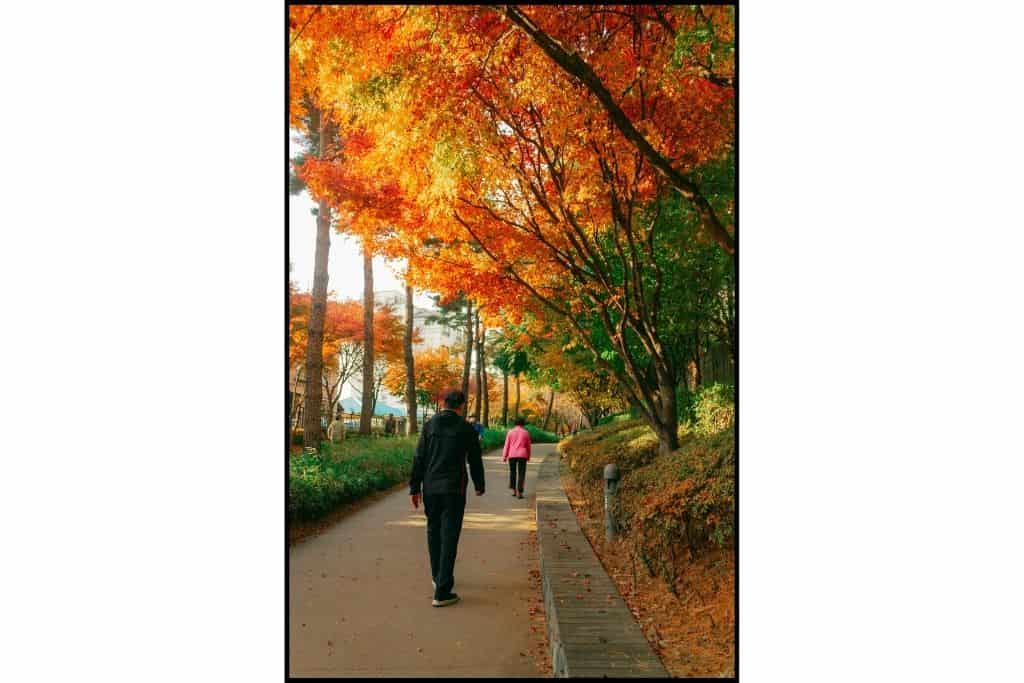
Autumn highlights:
- Maple Forest Grove: A concentrated stand of Japanese and Korean maple trees forming a brilliant autumn canopy.
- Moon Reflecting Pond (Wolmyeongho): Calm water that mirrors the colorful leaves — perfect for photos.
- Wolgwangdae Observatory: Panoramic views of northern Seoul framed by mountains brushed with fall colors.
Practical Info:
- Getting there:
- Line 4: Miasageori Station (Exit 2) → Gangbuk05 bus → Bukseoul Ggumesup stop (~15 min)
- Line 6: Dolgoji Station (Exit 3) → Bus 147 → Bukseoul Ggumesup stop (~12 min)
- Line 4: Miasageori Station (Exit 2) → Gangbuk05 bus → Bukseoul Ggumesup stop (~15 min)
- Hours: Open 24/7 (Observatory hours may vary)
- Facilities: Cafes and restaurants inside the park — plan to stay awhile.
- Perfect for: Photographers wanting a quieter fall scene, families planning a relaxed park day.
University Campuses: Seoul’s Hidden Foliage Gems
Seoul’s university campuses turn into some of the city’s most beautiful autumn spots, with tree-lined paths, historic buildings, and a distinctly Korean academic vibe that’s especially charming in fall.
Yonsei University: Ivy & Autumn Leaves
Yonsei University, founded in 1885, is one of Seoul’s most picturesque campuses and becomes a golden wonderland in autumn.
The historic grounds welcome visitors to explore tree-lined paths, ivy-covered buildings, and the daily buzz of student life.

Autumn Highlights:
- Ivy-covered Gothic buildings: Historic stone halls draped in crimson ivy — dramatic backdrops for fall photos.
- Campus gardens: Well-kept lawns and botanical gardens featuring diverse Korean native trees in gold, red, and orange.
- Ginkgo tree lanes: Famous tree-lined walkways turning into golden tunnels during peak season (late October to early November).
- Student vibe: A glimpse of Korean campus culture in autumn — outdoor study spots, casual gatherings, and seasonal festivals.
Practical Info:
- How to get there: Subway Line 2 → Sinchon Station (Exit 2 or 3) → about a 5-minute walk to the main gate.
- When to visit: Generally open during daylight hours; check for campus events.
- Tip: Stick to main pathways and public areas; avoid classrooms and private buildings.
- Nearby: Easily combine with Hongdae nightlife or Sinchon shopping and dining — both within a short walk.
Ewha Womans University: Campus Fall Colors
Located next to the lively Sinchon–Edae shopping district, Ewha Womans University blends striking architecture with colorful autumn scenery, making it worth a visit in any season.
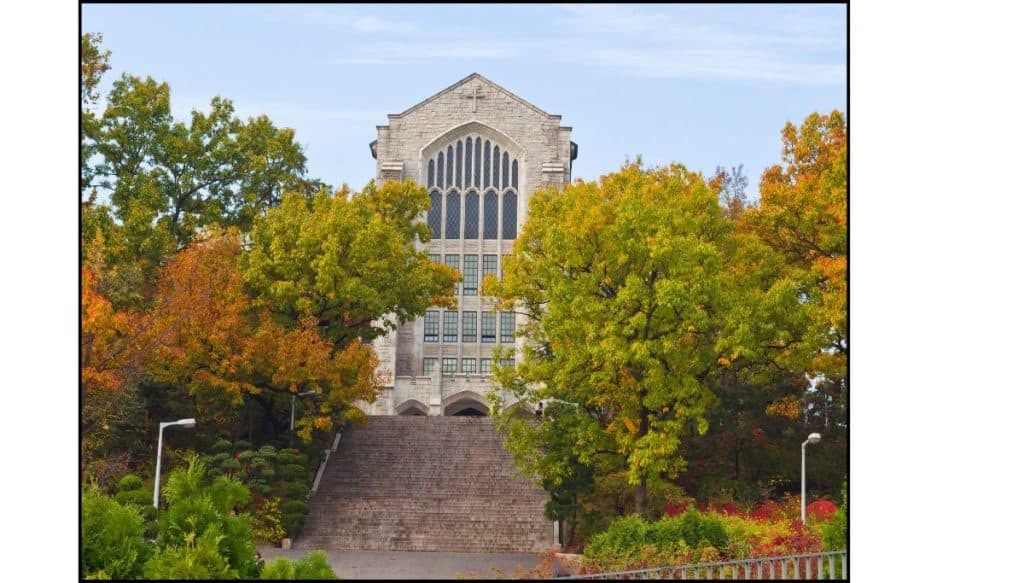
What makes it special:
- Unique architecture: A mix of modern and traditional buildings creates interesting backdrops for autumn photography.
- Seasonal beauty: The campus was designed with natural beauty in mind year-round — especially vibrant in fall.
- Convenient location: Easy to pair with shopping and dining in the Sinchon area.
Practical Info:
- How to get there: Subway Line 2 → Ewha Womans University Station → Exits 2 or 3 → Short walk to Entrance
- Perfect for: Combining with Sinchon exploring, architectural photography, or a casual campus stroll.
Sungkyunkwan University: Academic Autumn Charm
Sungkyunkwan University, one of Korea’s oldest educational institutions, offers a truly timeless autumn scene right in central Seoul.
Its historic lecture halls and traditional Korean architecture are especially beautiful when the campus’s famous ginkgo trees turn gold in late October.
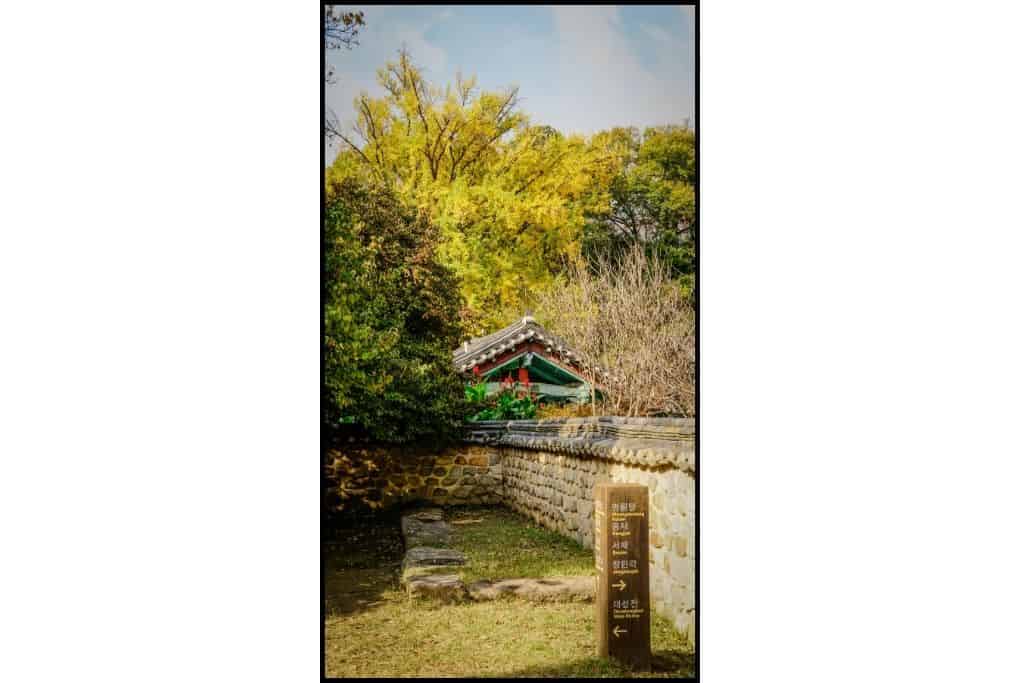
Why locals love it:
- Historic significance: Korea’s oldest university, with centuries of scholarly history.
- Ginkgo tree spectacle: Rows of brilliant golden ginkgo trees that rival any major park.
- Myeongnyundang Lecture Hall: A highlight area surrounded by golden leaves and traditional buildings.
- Authentic atmosphere: Experience where generations of Korean scholars have studied.
Practical Info:
- How to get there: Subway Line 4 → Hyehwa Station → Exit 1 → Short walk to the campus gate.
- Best timing: Late October, when ginkgo trees reach peak color.
- Photography: Traditional Korean architecture and golden foliage make striking photo compositions.
Hidden Gems & Local Favorites: Seoul’s Secret Autumn Spots
Beyond Seoul’s famous palaces and big-name parks, the city hides plenty of lesser-known fall spots that locals love, but most tourists overlook.
These under-the-radar places deliver authentic autumn scenery without the crowds, giving you a more personal way to soak in Seoul’s fall colors.
Maeheon Citizen’s Forest: Local Fall Escape
A hidden favorite among Seoul locals, Maeheon Citizen’s Forest, also known as Yangjae Citizens’ Forest.
It features over 1,300 ginkgo trees arranged in perfect rows along a 2.7 km pathway, making it one of Seoul’s most underrated spots for golden autumn walks.
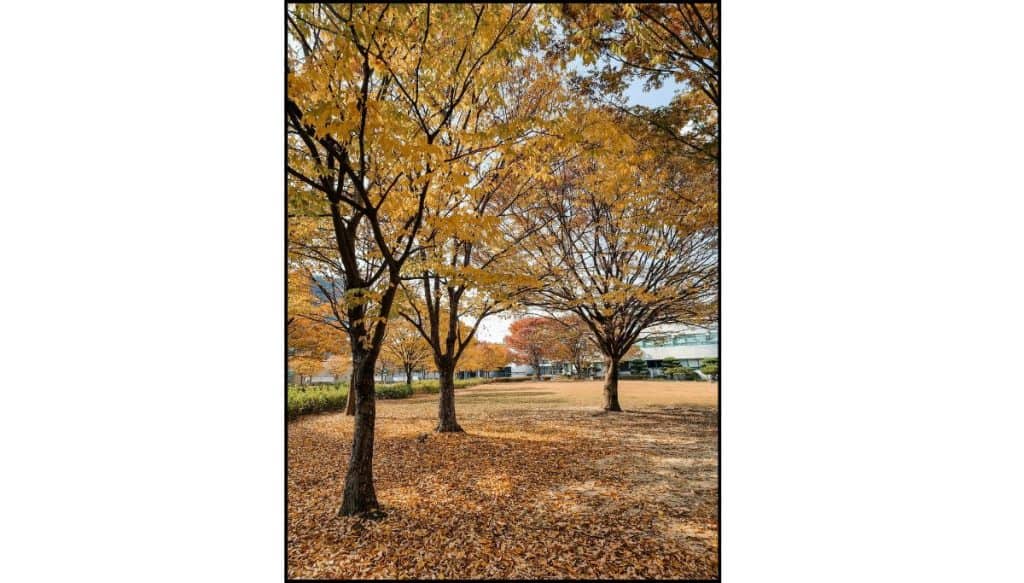
Why it’s special:
- Massive ginkgo display: One of Seoul’s largest concentrations of ginkgo trees.
- Perfect rows: Orderly lines of trees create dramatic golden corridors.
- Local secret: Lesser-known to tourists but spectacular in late October.
- Photography paradise: Tree tunnels perfect for golden-hour portraits.
Practical Info:
- How to get there: Shinbundang Line → Yangjae Citizens’ Forest Station → Exit 5 → about 500 m on foot (7-minute walk).
- Best timing: Late October for peak ginkgo yellow.
- Crowd level: Much quieter than famous spots like Deoksugung Stone Wall Path.
Bonus tip: If you love plants and flowers, there’s a local flower market near Yangjae Citizens’ Forest Station (Sinbundang Line, Exit 4).
It’s about a 10-minute walk from the station and completely free to browse. It’s perfect for picking up seasonal blooms or just enjoying the greenhouse atmosphere
Grass Park at Jamwon Hangang Park: Riverside Autumn Grasses
This unique section of Hangang Park offers an autumn experience you won’t find in Seoul’s forests or tree-lined streets.
Instead of traditional fall foliage, this “Grass Park” focuses on ornamental grasses and late-blooming flowers that create stunning textures and colors.

Special autumn features:
- Pink Muhly Grass: Feathery pink plumes that have become a Korean autumn sensation.
- Japanese Blood Grass: Striking red grass varieties.
- Golden Himalayan Fairy Grass: Shimmering golden textures.
- Purple Fountain Grass: Deep purple grass swaying in the breeze.
- Perennial showcase: Over 20 grass species representing unique autumn hues.
- Timing: Pink muhly typically blooms early October to early November — the best time to visit.
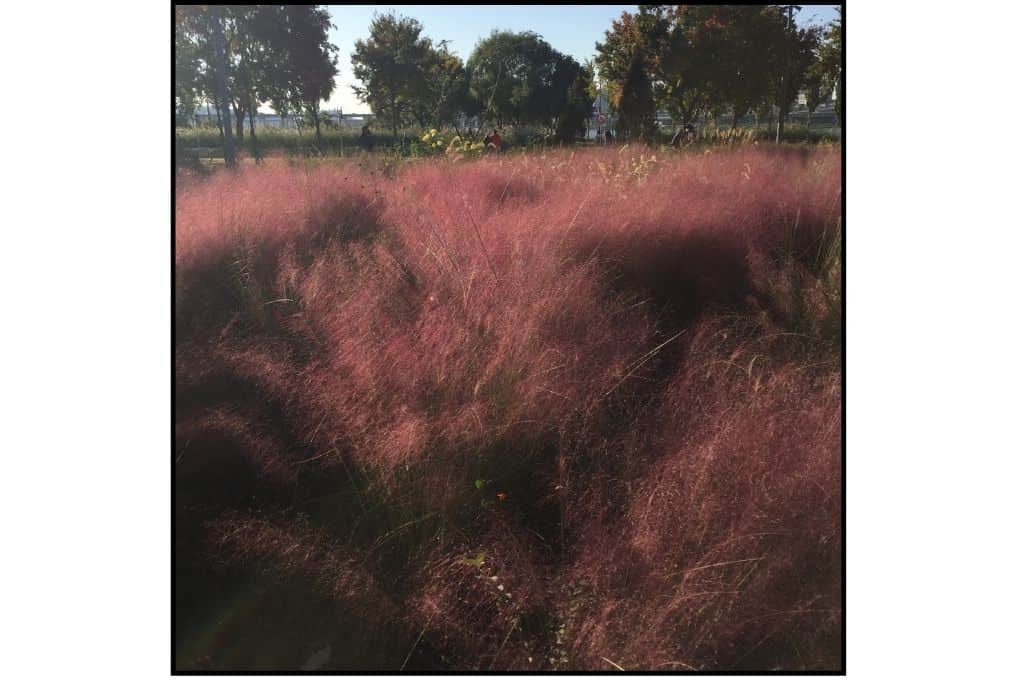
Practical Info:
- How to get there: Line 3 → Jamwon Station → Exit 3 or 4 → walk to the corner, turn left at the light, continue straight to main road, turn right at the stoplight, cross the street at the crosswalk, and continue under the underpass. It’s about 10 minutes on foot.
- Hours: Open 24/7.
- Perfect for: Instagram photography, experiencing Korea’s grass garden trend, unique autumn colors.
- Photography tip: Pink muhly is extra photogenic in late afternoon when it catches the golden-hour light.
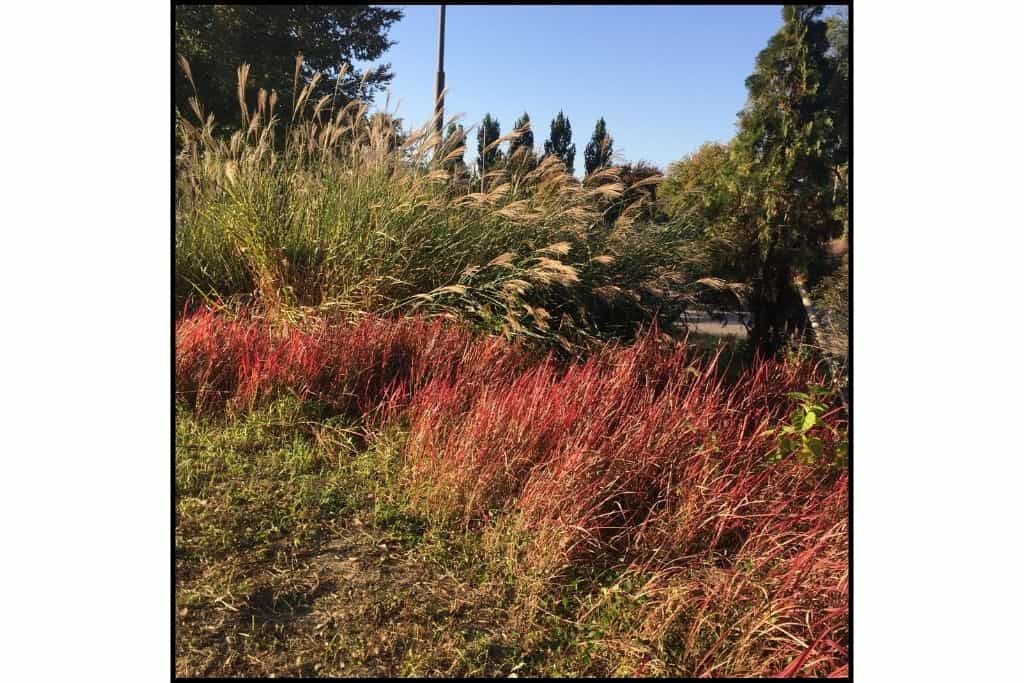
Neighborhood Autumn Walks
Seoul’s urban streets can be just as beautiful in autumn as its famous parks.
These neighborhood strolls combine local culture, shopping, cafes, and hidden pockets of fall foliage for a laid-back seasonal adventure.
Samcheong-dong to Bukchon Hanok Village: Hanok Streets & Fall Vibes
This traditional neighborhood walk blends autumn colors with cultural exploration.
Follow a 1.5 km route along palace walls, old hanok streets, and local art galleries, with plenty of fall foliage and cozy rooftop cafes along the way.
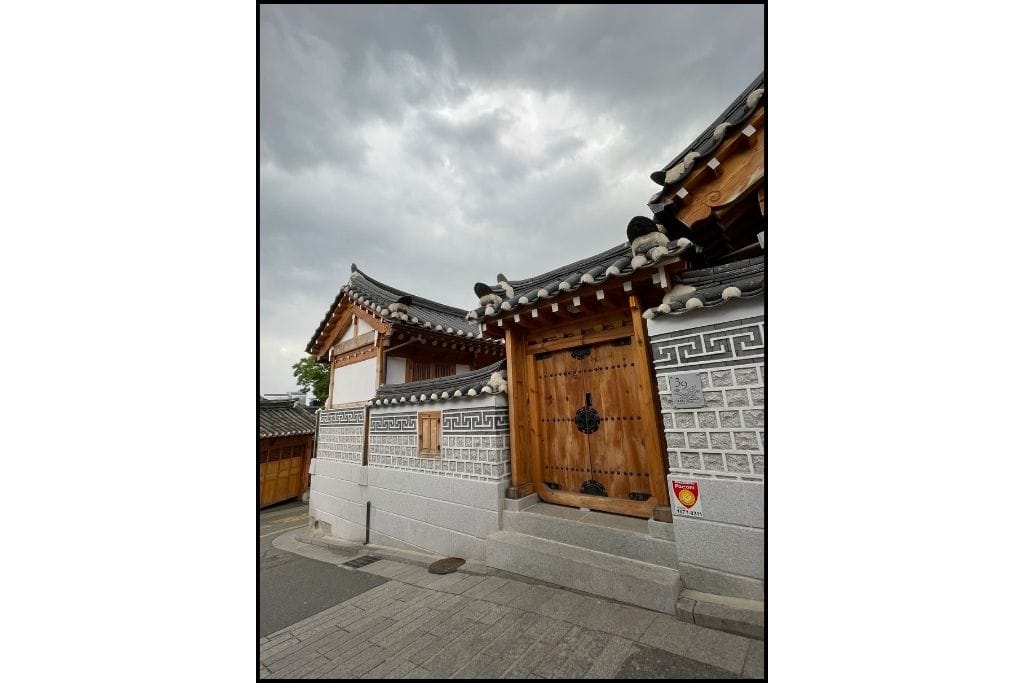
Autumn walking route:
- Start: Exit Anguk Station (Line 3), walk toward Gyeongbokgung Palace’s east wall near the National Folk Museum. The palace wall here is beautifully framed by ginkgo and maple trees in autumn.
- Path: Stroll through Samcheong-dong’s traditional streets lined with fall colors, passing small art galleries and craft shops.
- Destination: End at Bukchon Hanok Village, where centuries-old hanok houses meet the golden leaves.
- Bonus: Pop into a rooftop café in Samcheong-dong for elevated views of the colorful neighborhood.
Practical Info:
- How to get there: Take Line 3 to Anguk Station — perfect if you’re visiting Changdeokgung first.
- Perfect for: Cultural strolls, traditional architecture photography, café hopping.
- Walking time: 1–2 hours, depending on your photo stops and café breaks.
- Local tip: Pop into small art galleries and craft shops along the way — many sell unique souvenirs.
Sinsadong Garosu-gil: Urban Autumn Shopping
Known as the “Ginkgo Tree Shopping Street,” Garosu-gil mixes golden fall foliage with Seoul’s famous shopping and café culture.
This stylish neighborhood is where locals soak up autumn while browsing boutiques and sipping seasonal lattes.

Autumn experience:
- Tree-lined shopping: Rows of golden ginkgo trees line the main street.
- Cafe culture: Dozens of cafés with autumn views and seasonal drinks.
- Fashion district: Trendy shops and designer boutiques tucked under bright yellow leaves.
- Urban autumn vibe: A snapshot of how locals enjoy everyday autumn moments.
Practical Info:
- How to get there: Take Subway Line 3 → Sinsa Station → Exit 8 → walk straight for about 5 minutes to reach the main Garosu-gil street.
- Perfect for: Shopping, café hopping, urban autumn street photography.
- Best timing: Late October for peak ginkgo color; afternoons for the best shopping and people-watching.
Day Trips from Seoul: Chasing Autumn Foliage
While Seoul delivers plenty of incredible autumn moments, some of Korea’s most spectacular fall scenery waits just beyond the city limits.
These easy day trips lead you to mountain parks, botanical gardens, and historic sites where autumn colors reach their most dramatic peaks.
Easy Day Trips from Seoul
These spots are close enough to squeeze in as a half-day adventure or an easy full day trip as most are within about one to two hours from Seoul.
If you’d rather skip the hassle of figuring out buses and tickets, plenty of guided day tours cover these autumn highlights too.
Nami Island: K-Drama Autumn Paradise
This half-moon shaped island, made famous by the Korean drama “Winter Sonata,” transforms into one of Korea’s most iconic autumn destinations.
Located in Gapyeong, about two hours from central Seoul, Nami Island offers the quintessential Korean autumn experience.
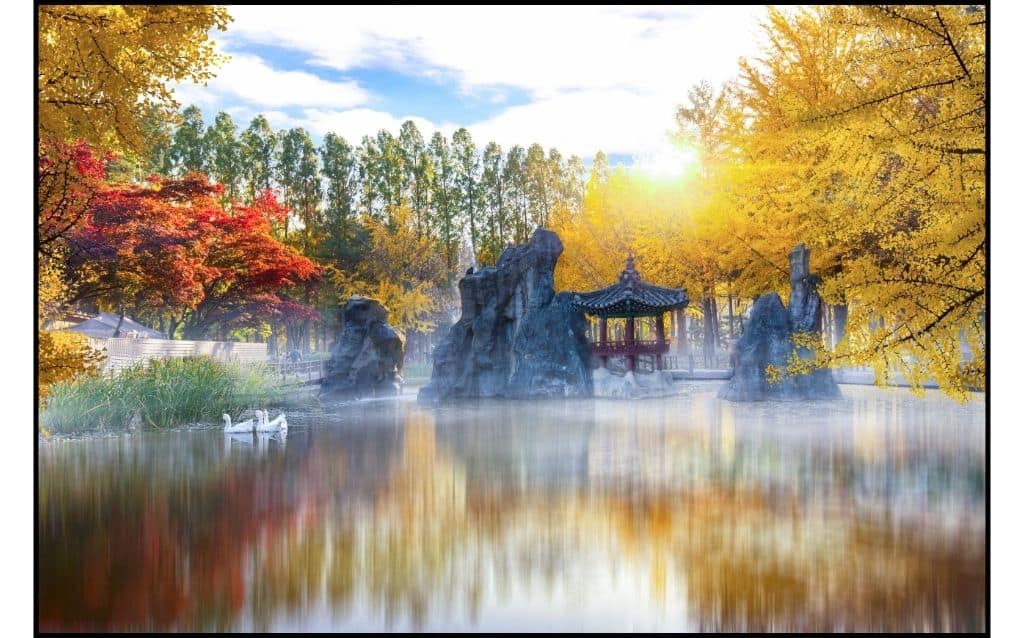
Autumn highlights:
- Metasequoia tree tunnel: The iconic autumn corridor that draws crowds for its dramatic golden and amber canopy
- Maple tree lanes: Brilliant red and orange pathways throughout the island
- Ginkgo tree paths: Golden tree-lined walkways perfect for romantic autumn strolls
- Scenic gardens and ponds: Autumn reflections and perfectly manicured seasonal landscapes
Cultural experiences:
- Art galleries and exhibitions: Indoor cultural attractions complementing the natural beauty
- Bike rentals: Explore the island’s autumn paths on two wheels
- Zip-lining: Adventure activities with autumn foliage views
- Restaurants: Multiple dining options featuring local cuisine amid scenic surroundings
Practical information:
- Passport requirement: Nami Island is technically its own “micronation” – bring your passport for entry (conflicting information exists, but better safe than sorry)
- Foreign visitor discount: Present your passport for potential discounts
You can find ferry schedules, attraction maps, and ticket details on the official Nami Island website.
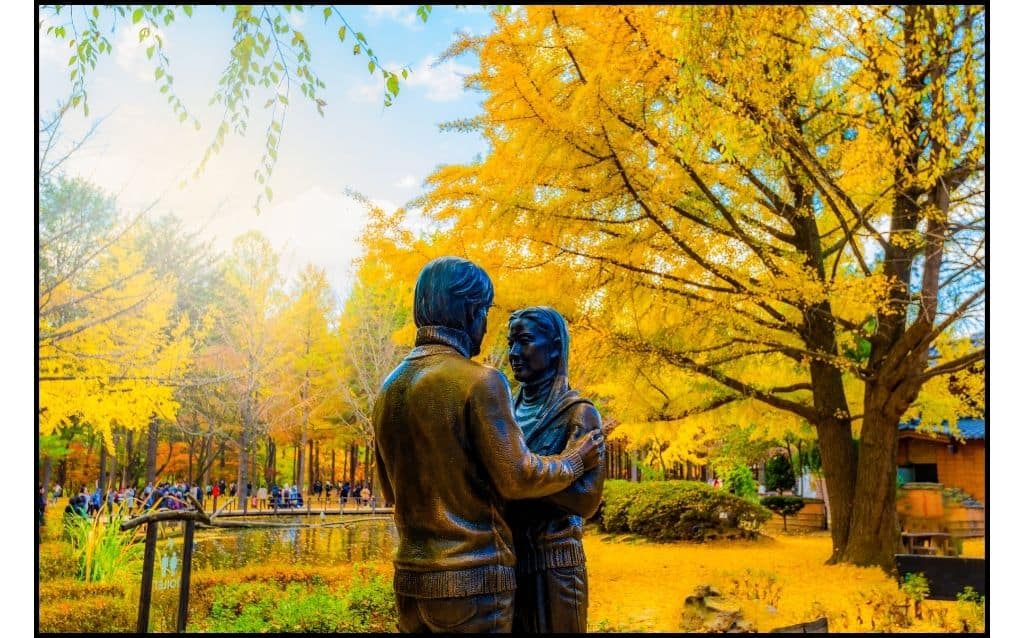
Transportation options:
By Train:
- ITX Cheongchun train from Yongsan Station to Gapyeong Station (about 1 hour)
- Exit 1 from Gapyeong Station, cross street to bus stop
- Take bus 10-4 for 6 stops to Namiseom Bus Terminal
- Alternative: Taxi from Gapyeong Station (about 10 minutes, ~₩10,000)
- Take ferry to Nami Island from Gapyeong Wharf
By Bus:
- Express bus 8005 from Cheongyangni Station Bus Transfer Center (1 hour 18 minutes, 18 stops)
- Transfer to local bus 12 (30 minutes, 22 stops) to Ihwa Samgeori
- Walk 1,480m (25 minutes) or take taxi to wharf
By Shuttle: Round-trip shuttle buses are available through tour companies like KKday, with convenient pickups at Hongik University, Namsan, and Myeongdong stations. Book your seat HERE
Hwadam Botanic Garden: Hidden Forest Gem
I used to live a short distance from Hwadam Forest, so popping over for an afternoon stroll among the autumn colors was an easy treat.
Once considered a “hidden gem,” Hwadam Forest has gained popularity as one of Korea’s premier autumn destinations. This research facility and botanic garden showcases over 4,000 species of plants across 16 themed gardens.
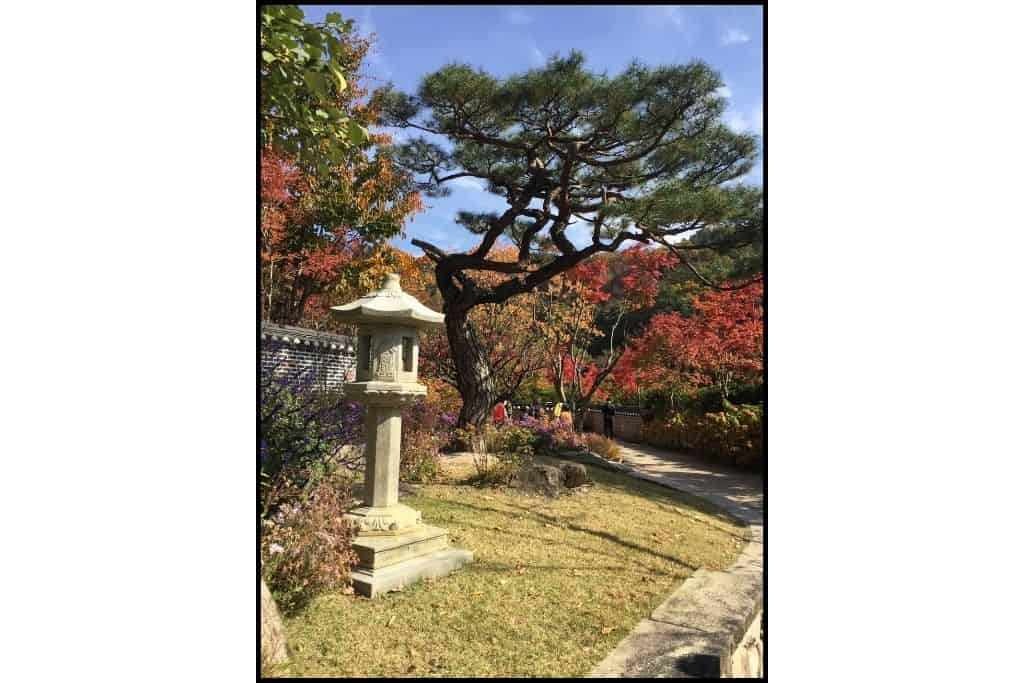
It does get busy during peak foliage, so expect crowds.
You can grab a snack, sip coffee, or enjoy a full Korean meal surrounded by brilliant fall scenery.
If you’re adventurous, follow my directions below to make a full day of it on your own.
If you’d rather skip bus transfers and tickets, day tours are a great option too. Look for the affiliate link below!
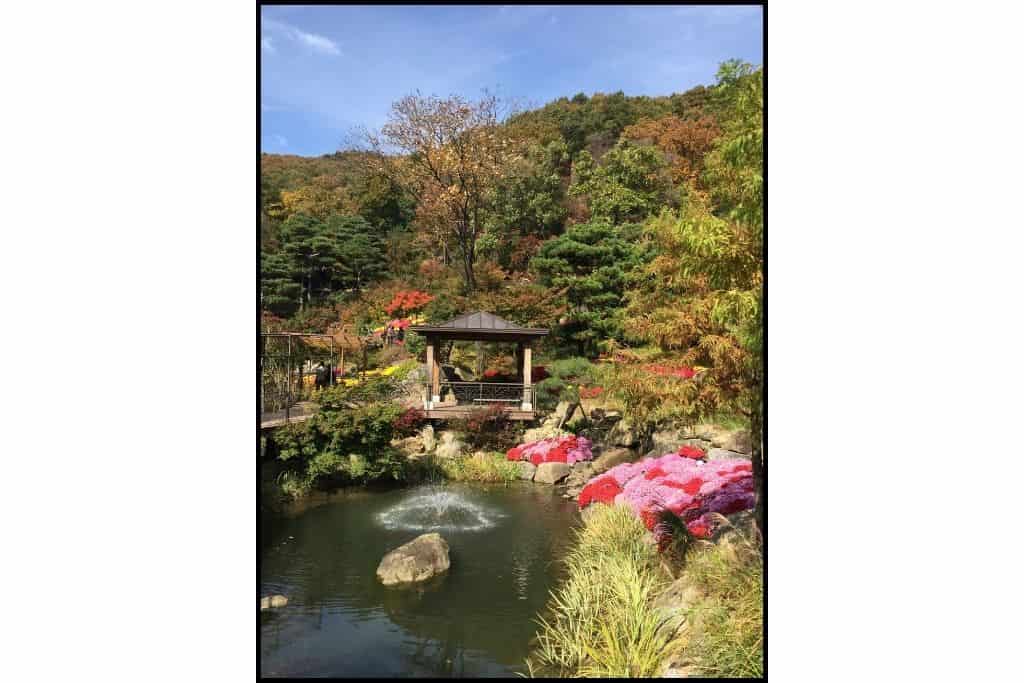
Autumn experiences:
- Monorail through autumn forest: Scenic rail journey meandering through vibrant fall colors (additional ticket required)
- 16 themed gardens: Different autumn experiences from native Korean plants to international species
- Birch forest section: Brilliant golden birch trees creating cathedral-like autumn atmosphere
- Research facility: Witness conservation efforts for endangered plants in beautiful natural setting
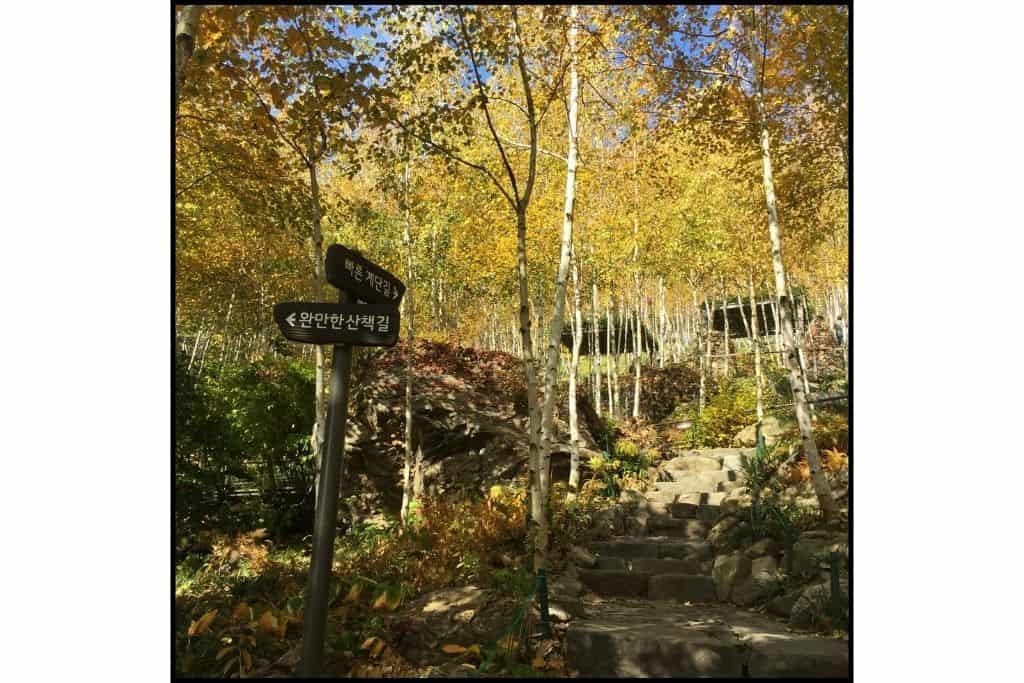
Dining and facilities:
- On-site café and bakery: Coffee and snacks with stunning natural beauty views
- Korean restaurant: Full meals while soaking in autumn scenery
- Educational component: Learn about Korean flora and conservation efforts
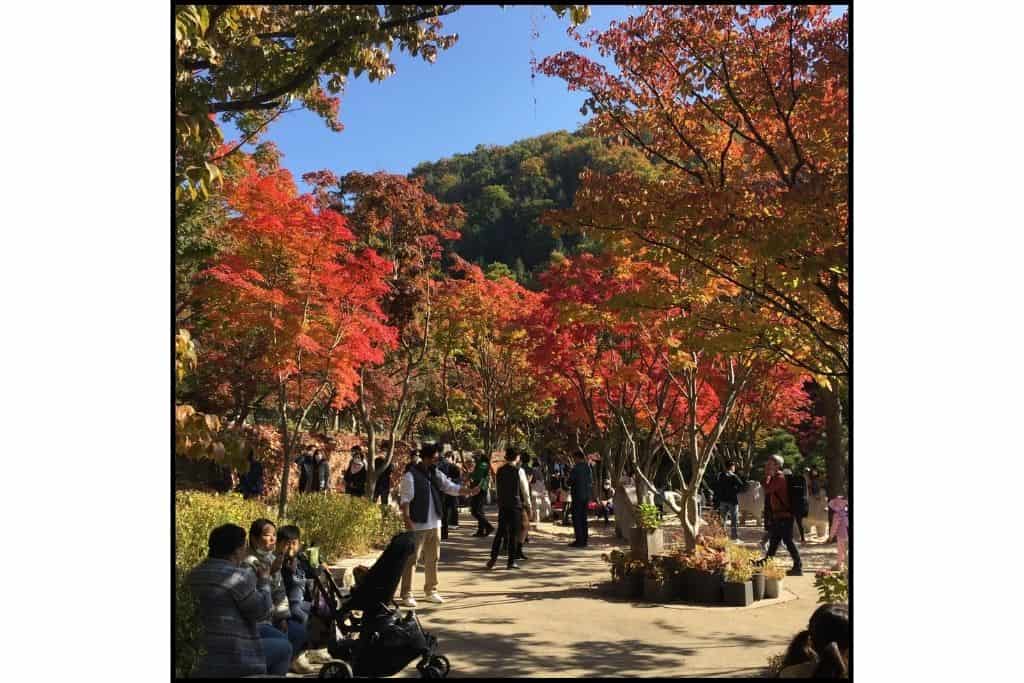
Practical information:
- Ticket challenges: Advance reservations typically require Korean phone number
- Foreign visitor solution: Purchase tickets on-site with passport (one ticket per passport)
- Admission fees: Adult ₩11,000, Seniors/Youth ₩9,000, Children ₩7,000, Infants (under 24 months) free
- Monorail: Separate tickets sold at on-site kiosk
- Hours: 9:00 AM – 6:00 PM (last admission 5:00 PM), Closed Mondays
Visit the Hwadam Botanic Garden website for ticket prices, opening hours, and seasonal garden info
Transportation:
- Subway route: Shinbundang Line to Pangyo Station, transfer to Gyeonggang Line, exit at Gonjiam Station
- From Gonjiam Station: Gwangju Bus 9 to Hwadam Botanic Forest, or taxi (10 minutes, ~₩10,000)
Alternative bus routes from Seoul:
- Bus 500-1: Jamsil Station Exit 2 → Jamsil Transfer Center → Bus 500-1 (40 stops, 1 hour 15 minutes) → Gonjiam 1-ri/Someorigukbap → Transfer to Gwangju Bus 9 (15 minutes)
- Bus 500-2: Samsung Station Line 2 Exit 3 → Bus 500-2 → Gonjiam Bus Terminal → Gwangju Bus 9 (15 minutes)
Tour option: Many companies offer day tours including transportation, ideal for visitors wanting hassle-free access.
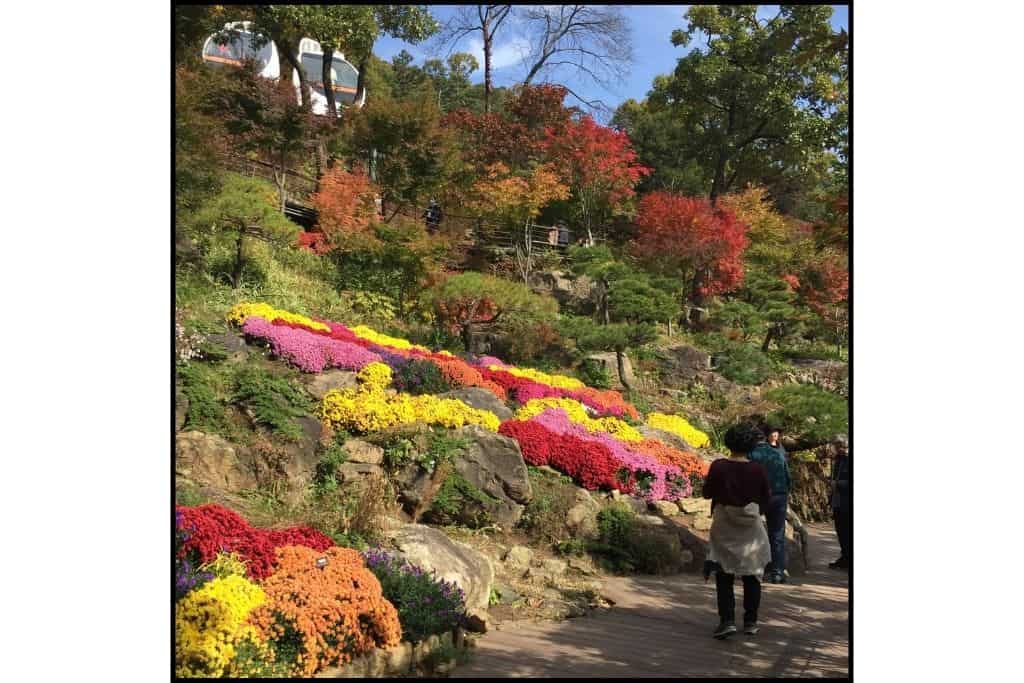
Namhansanseong Fortress: UNESCO Heritage Meets Fall Colors
Once an important defensive stronghold protecting the capital, Namhansanseong Fortress is now a UNESCO World Heritage site where Korean history and stunning autumn colors come together.
The ancient stone walls winding through crimson and gold forests create a classic Korean mountain autumn scene.
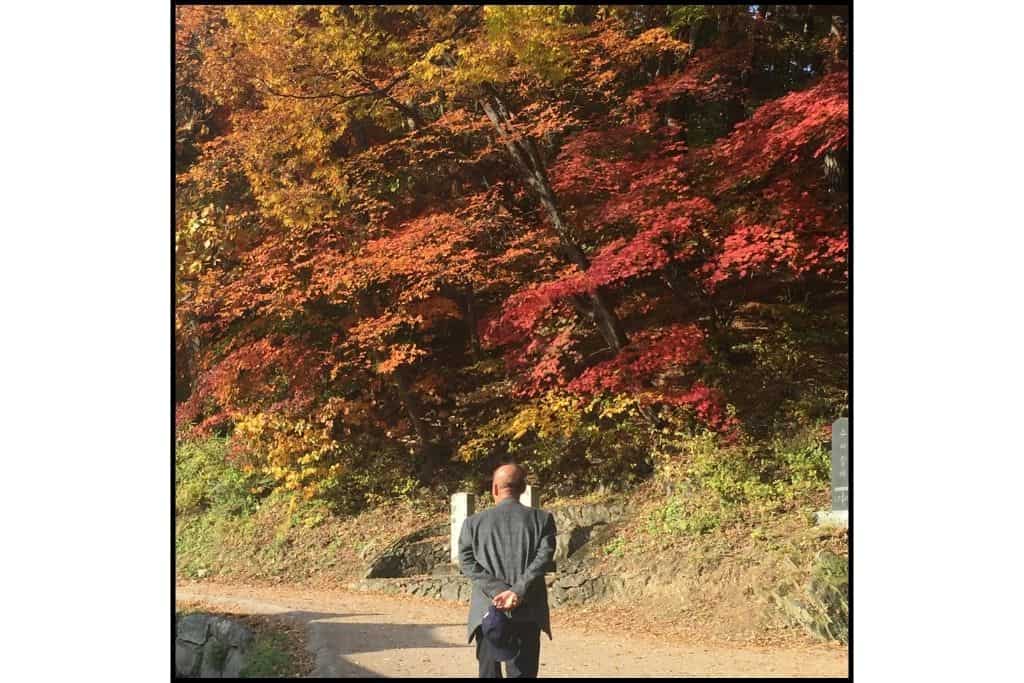
Autumn Appeal:
- Mountain fortress walls: Walk 12.4 km of ancient stone walls surrounded by vibrant autumn forest.
- Historic temples: Buddhist temples tucked among crimson and gold foliage.
- Hiking trails: Routes for all levels winding through brilliant fall colors.
- Seoul views: Panoramic mountain viewpoints with sweeping autumn vistas of the capital.
- Traditional village: A small village inside the fortress walls with cozy restaurants and cafés.
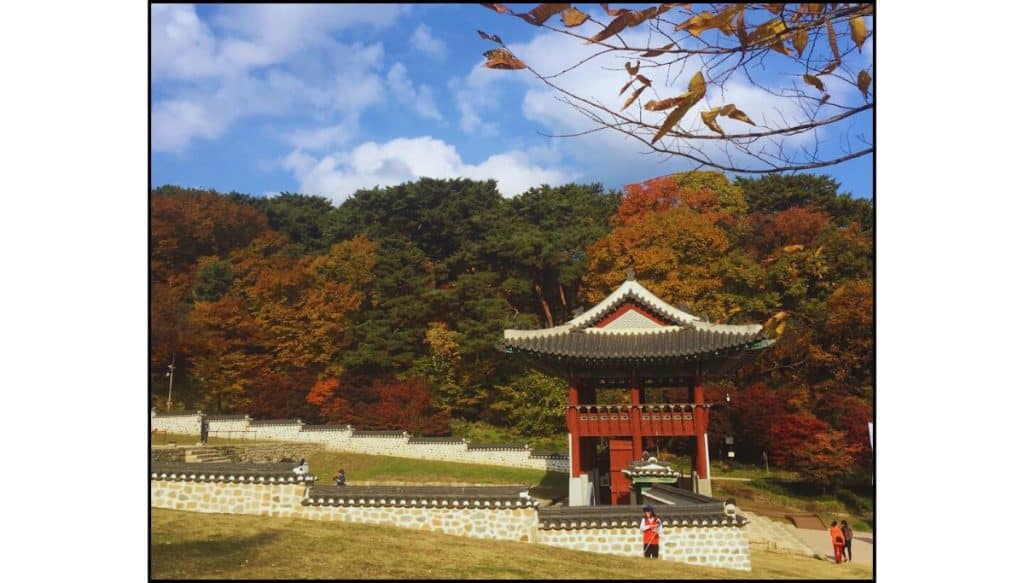
Practical information:
- Crowd management: Very popular for autumn foliage, go early and expect full buses
- Traffic warning: The Road to the entrance often has slow traffic jams during peak season
- Transportation tip: Bus is better than a taxi during peak times, as taxis may decline the trip due to traffic
Directions:
- Getting there: Line 8 to Sanseong Station, Exit 2, walk 100m to bus stop
- Bus options: Buses #9, #9-1, or #52 to Namhansanseong bus stop
Garden of Morning Calm: Arboretum in Autumn
Located in Gapyeong against Chungnyeongsan Mountain, this 30,000+ square meter garden showcases over 5,000 plant species with spectacular autumn displays.
Autumn features:
- Multiple themed sections: Each garden area offers unique autumn color palettes
- Mountain backdrop: Autumn foliage extends into surrounding mountain landscape
- Photography opportunities: Carefully designed gardens perfect for autumn portraits
- Peaceful atmosphere: Less crowded alternative to some major autumn destinations
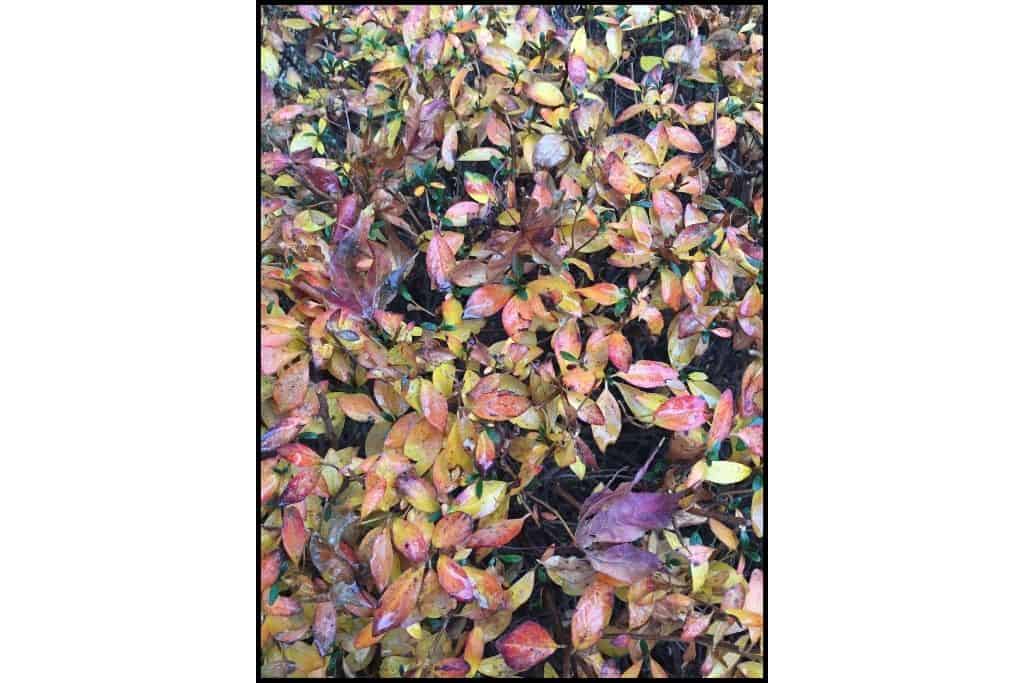
Practical information:
- Hours: Open 365 days, 8:30 AM – 7:00 PM (admission closes one hour before closing)
- Admission: Adult ₩10,000, Youth ₩7,500, Children ₩6,500
Visit the Garden of Morning Calm website for seasonal flower festival dates, opening hours, and admission details.
Transportation options:
- By train: ITX Cheongchun from Yongsan Station to Daesong-ri Station, then taxi (12 miles, 20 minutes, $15-25 USD)
- By bus: Intercity bus from Dong Seoul Terminal to Cheongpyeong, then taxi (8 miles, 15 minutes, $10-20 USD)
- By tour: Most popular and efficient option – includes transportation and other tourist spots
Hwaseong Fortress, Suwon: Fall Colors & UNESCO History
Built in the late 18th century, Hwaseong Fortress encircles Suwon City, featuring remarkable Korean architecture and stunning autumn colors.
As the only remaining walled city in South Korea, it’s a standout spot for crisp fall walks and unique photo angles you won’t find inside Seoul.
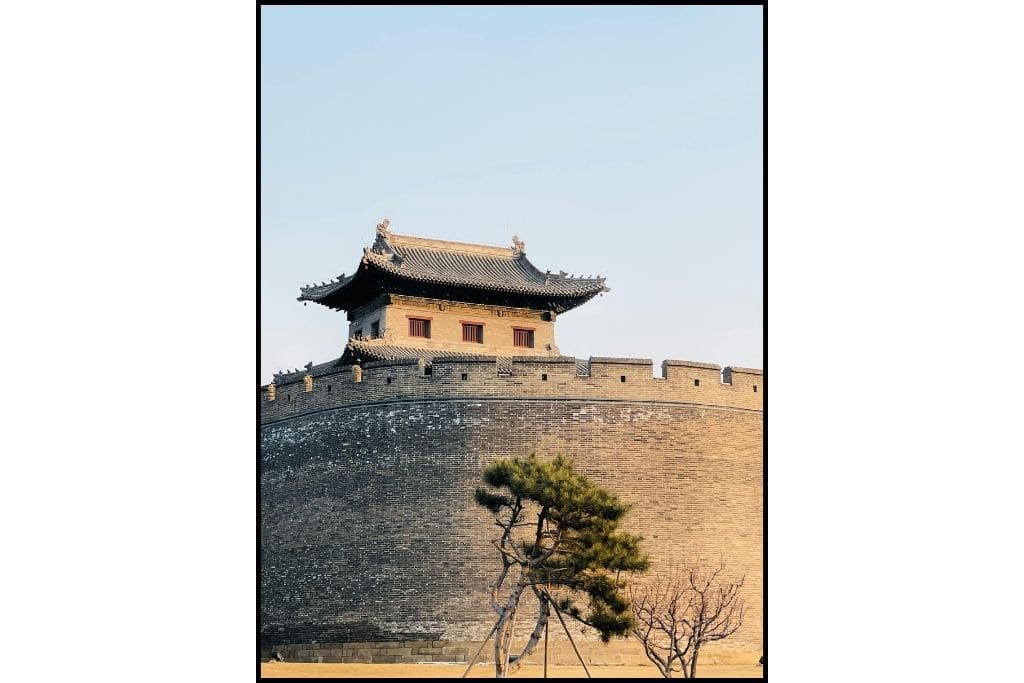
Autumn highlights:
- Historic fortress walls: Ancient stone fortifications framed by autumn colors
- City views: Panoramic autumn vistas of Suwon from fortress walls and Paldal Mountain
- Cultural activities: Traditional archery experiences and cultural performances amid fall colors
- Historic gates: Multiple fortress entrances providing different autumn photography perspectives
Practical information:
- Getting to Suwon: Subway Line 1 (cheapest) or train from Seoul Station (fastest, ₩2,700-₩8,400)
- From Suwon Station: Multiple buses to fortress, or Bus 1007 from Jamsil or Bus 3000 from Gangnam for direct access
- Cultural experiences: Traditional performances and historical demonstrations available
Longer Day Trips: Mountain Parks and Historic Cities
These destinations take more time to reach. Plan for an early start with a late finish, or even consider staying overnight if you want to soak it all in at a relaxed pace.
If you’d rather skip the stress of planning buses, routes, and entry tickets, day tours are an easy way to cover the highlights without the hassle.
Seoraksan National Park: Korea’s First Autumn Colors
Home to Korea’s third-highest peak, Seoraksan is often called the country’s autumn crown jewel for a reason.
It’s the first place in Korea where fall colors appear, giving it the longest autumn season and some of the nation’s most dramatic mountain scenery.
I took an overnight tour here, and I’m glad I did, as Seoraksan gets busy, especially in peak foliage season.
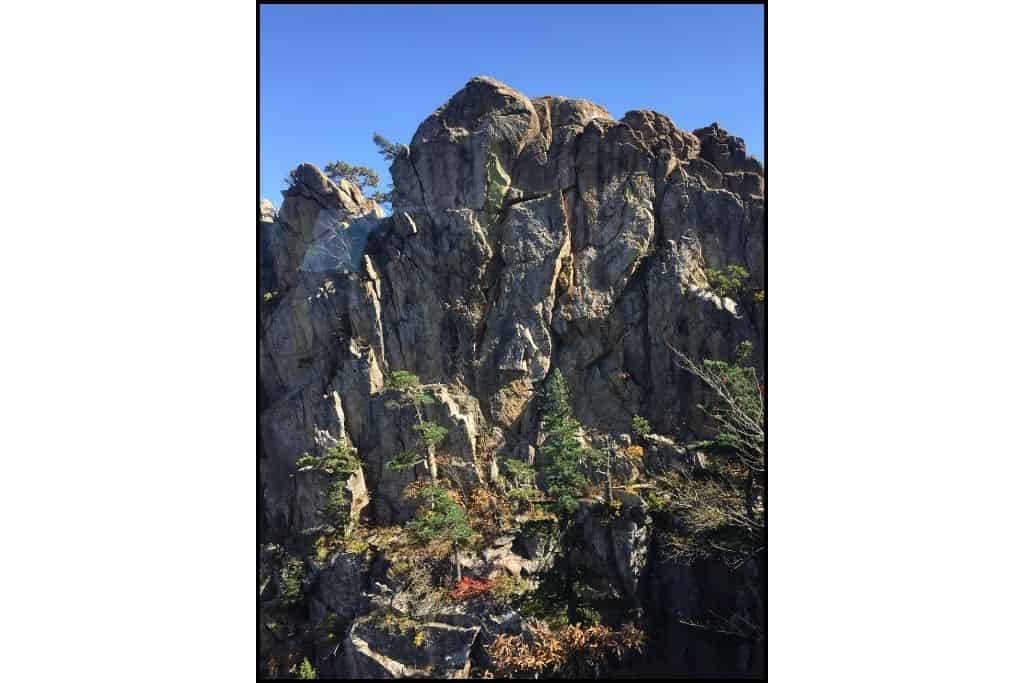
I rode the cable car up for sweeping mountain views. I hiked to a peak, rode the cable car down, ate lunch, and then found a quieter trail with a waterfall.
To make the most of it, arrive early. Or better yet, stay overnight or join a day tour to skip the stress.
Why it’s special:
- First autumn foliage: Colors begin in late September, earlier than anywhere else in Korea
- Dramatic landscapes: Rocky peaks, cascading waterfalls, and ancient temples amid autumn colors
- Hiking variety: Trails for all levels from leisurely valley walks to challenging peak climbs
- Cable car option: Aerial autumn views for those preferring not to hike
- Cultural sites: Sinheungsa Temple and other historic sites surrounded by fall colors
Practical information:
- Location: Sokcho, Gangwon-do (northeast Korea)
- Hours: 9:00 AM – 6:00 PM (arrive early as it gets very crowded)
- Park entry: Free (as of recent changes)
- Cable car: Adults ₩15,000 roundtrip, Youth ₩11,000, Infants free
Check the Seoraksan Cable Car website for tickets and operating hours.
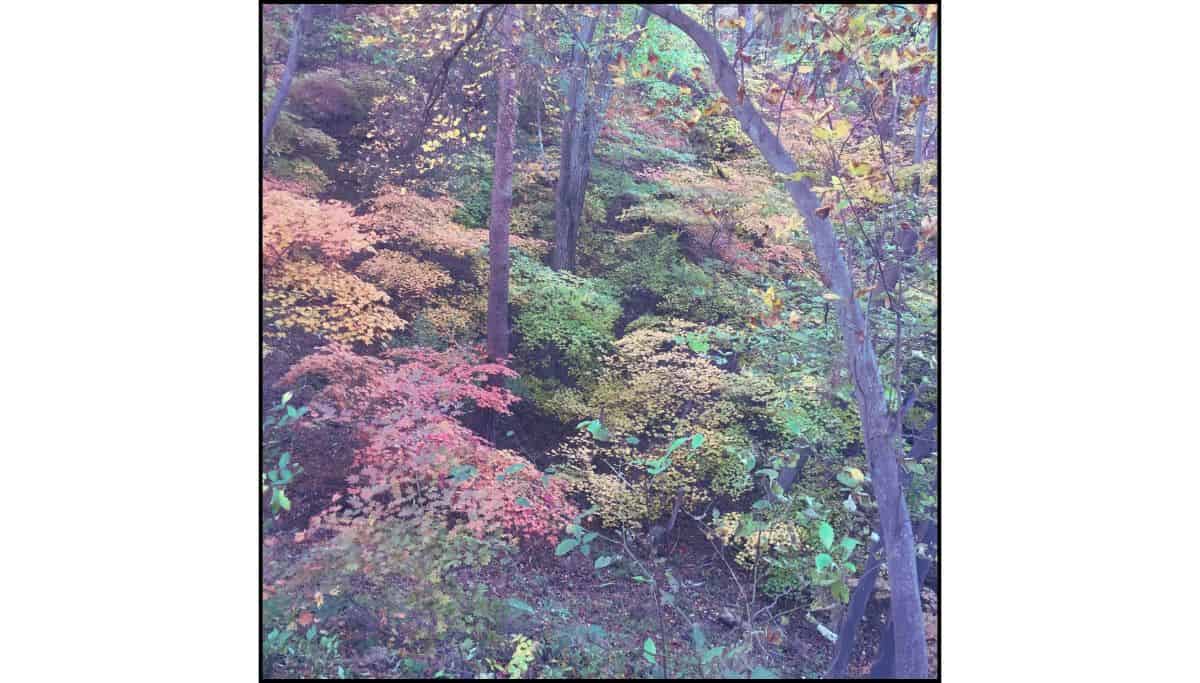
Transportation:
- Express bus: From Express Bus Terminal (Gangnam) or Dong Seoul Terminal to Sokcho
- Cost range: ₩17,200-₩28,900 depending on class
- Travel time: 2 hours 20 minutes to 3 hours depending on traffic
- Local connection: From Sokcho Express Bus Terminal, take local bus 7 or 7-1 to park entrance
Naejangsan National Park (with Jeonju): Korea’s Autumn Maple Heaven
For the ultimate autumn day trip, combine Naejangsan National Park’s famous crimson foliage with Jeonju’s traditional hanok village and culinary specialties.
I visited Naejangsan and Jeonju together on an overnight tour, and I’d do it again. I would recommend it if you don’t want to deal with all the logisitcs of planning.
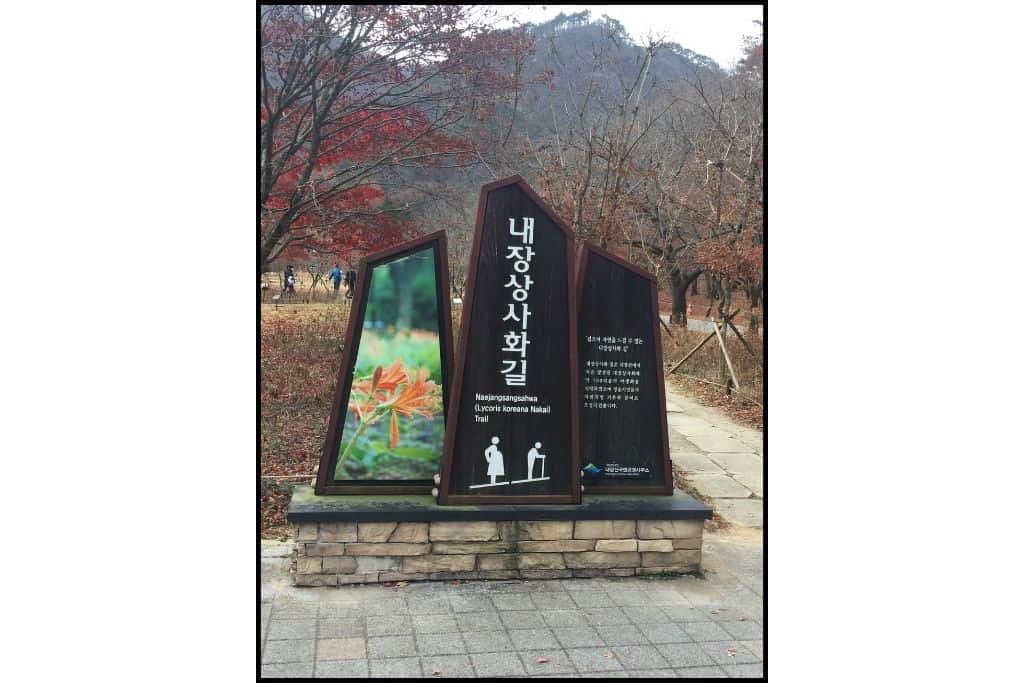
Please note that the walk from the parking lot to the park entrance is longer than you might expect. I definitely recommend wearing comfortable shoes or taking the park shuttle if available.
Jeonju pairs perfectly as an autumn add-on with its Hanok village, famous bibimbap, and sweet local choco pies.
If you’d rather go at your own pace, you can visit both on your own.

Naejangsan highlights:
- Vivid crimson foliage: Famous for the most intense red autumn colors in Korea
- Naejangsa Temple: 600-year-old temple surrounded by ancient maple trees
- Waterfalls: Dodeokpokpo and Geumseonpokpo waterfalls framed by autumn colors
- Cable car: Mountain views without strenuous hiking
Jeonju additions:
- Hanok village: Traditional Korean architecture amid autumn foliage
- Signature bibimbap: Jeonju’s famous version of Korea’s signature dish
- Choco pie specialty: Local sweet treat perfect for autumn exploration
- Cultural workshops: Traditional craft experiences and hanbok rentals
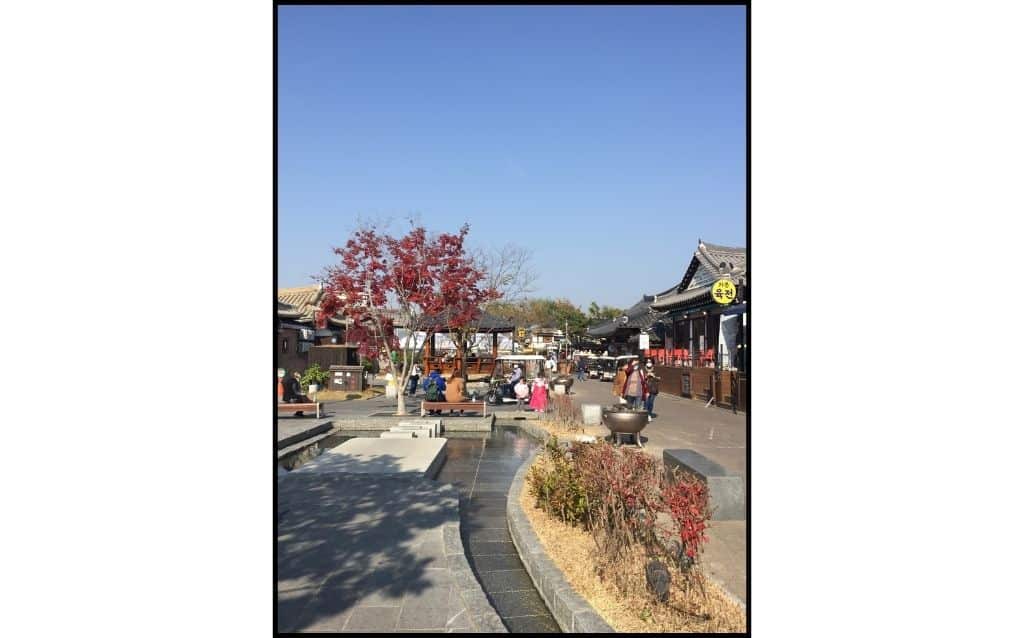
Practical information:
- Transportation: KTX from Seoul to Jeongeup Station, then walk outside the main entrance and catch local bus 171, which goes directly to Naejangsan National Park entrance.
- Alternative: Intercity bus from Express Bus Terminal to Jeongeup Bus Terminal, then take a taxi to the Naejangsan Rest Stop (내장터미널휴게소) — quick and convenient if you’re carrying bags.
- Park entry: Adult ₩3,000 (cash only).
- Shuttle service: ₩1,000 to the cable car station within the park.
Frequently Asked Questions: Seoul Autumn Foliage
Seoul’s fall colors usually start in early October, with peak foliage in mid- to late October. Mountain areas like Bukhansan change first, while ginkgo trees hold on into early November. Weekends can get packed at palaces, parks, and viewpoints like Namsan, so aim for midweek if you can.
Autumn is one of Seoul’s busiest seasons. Expect crowds at top spots in late October. Go early in the day or later in the afternoon to dodge the biggest rush. For less drowded areas, check out lesser-known places like Dream Forest or university campuses.
Layers! Mornings can be chilly, afternoons mild (10–20°C). Bring a light jacket, scarf, and comfy shoes, as you’ll walk a lot. If it rains, you can grab a cheap umbrella or poncho at any convenience store.
Plan 3–4 days for Seoul’s main foliage spots plus a day trip like Nami Island or Hwadam Forest. If you’re short on time, 2 days covers highlights like palaces and parks. Most spots are easy to reach by subway, but day tours can save time for farther trips like Seoraksan or Naejangsan.
Not at all! It’s encouraged! Locals love seeing visitors wear hanbok at palaces or Bukchon Hanok Village. It brings the old streets to life. Rental shops help you dress properly and often do your hair too. I loved wearing a hanbok for my palace day. My photos turned out beautiful, plus it was a fun experience to get dressed up. Just wear it respectfully, snap your photos, and enjoy stepping back in time.
🍁 Planning Your Korea Fall Trip? Don’t miss these guides!
✔️ Getting from Incheon to Seoul — easy, stress-free.
✔️ Top Things to Do in Seoul — food, fun, fall vibes.
✔️ 3-Day Itinerary for Seoul — no guesswork, just go. Save this guide & plan smarter!
Conclusion: Make the Most of Seoul’s Autumn
Seoul’s autumn season is one of the easiest ways to enjoy Korea’s famous fall colors without the hassle of remote mountain parks.
From royal gardens and modern parks to quiet neighborhood walks, the city combines natural beauty with deep cultural charm.
Use this guide’s detailed transport tips, realistic timing suggestions, and local insights to plan your perfect autumn day, or stretch it into a whole week.
I’ll update this guide with the 2025 forecast and new seasonal finds as autumn approaches. So check back before you pack your camera and cozy layers!
